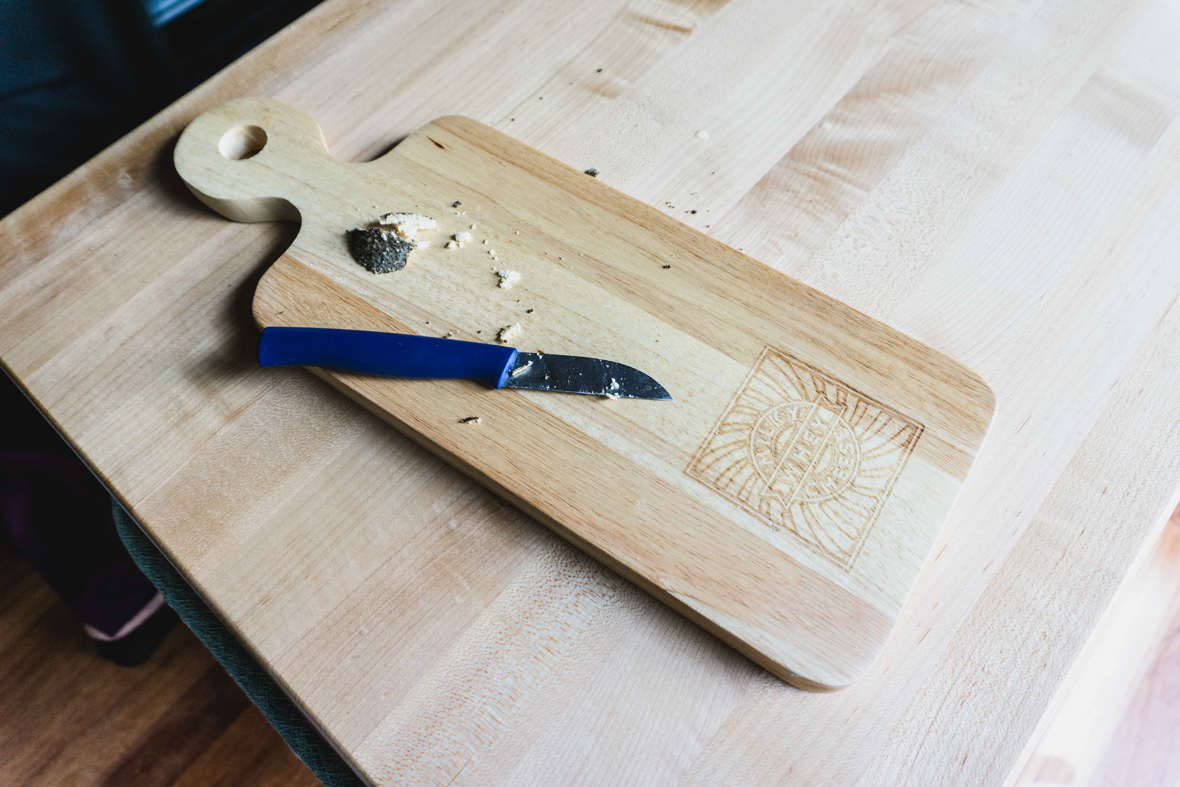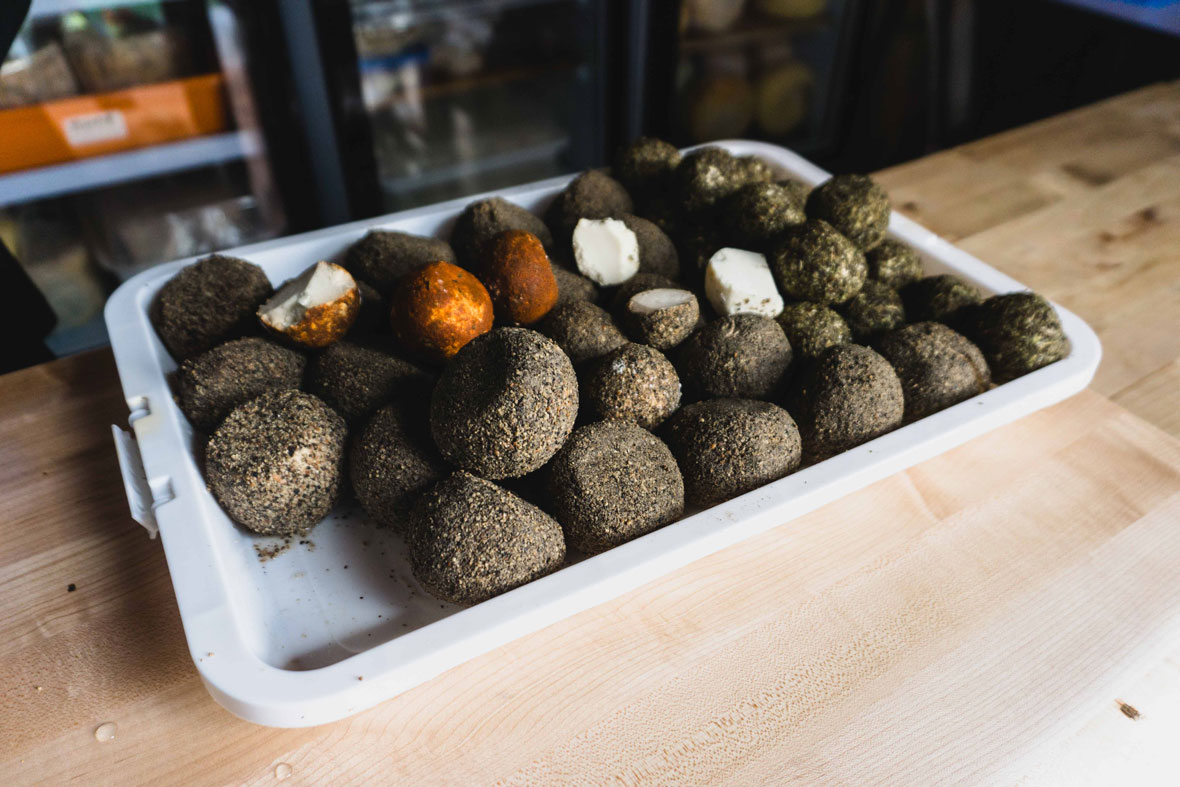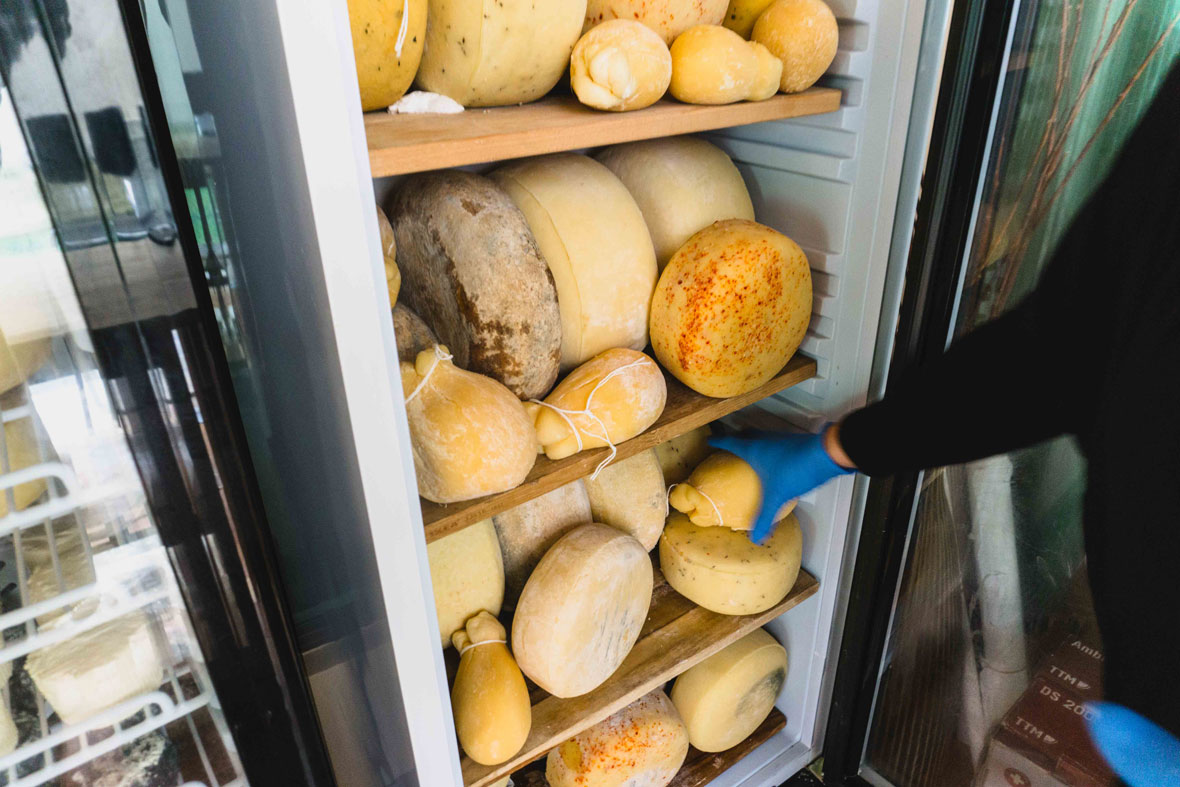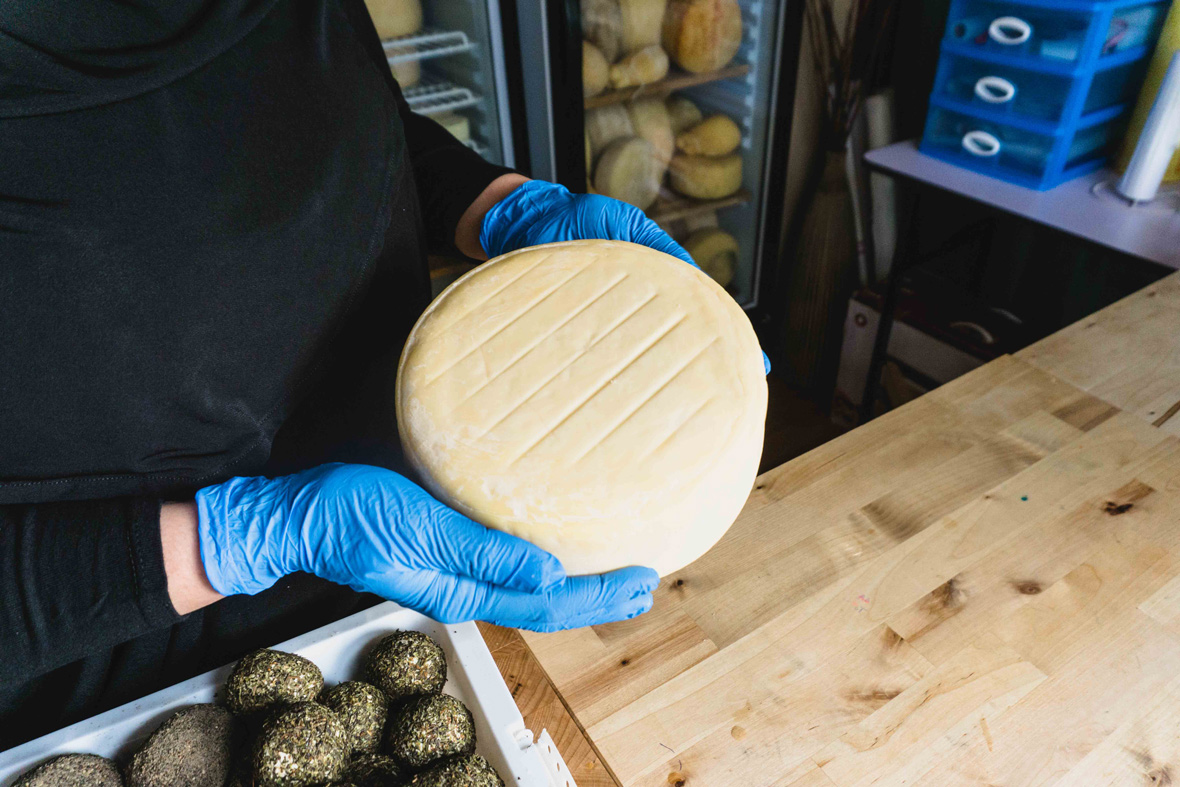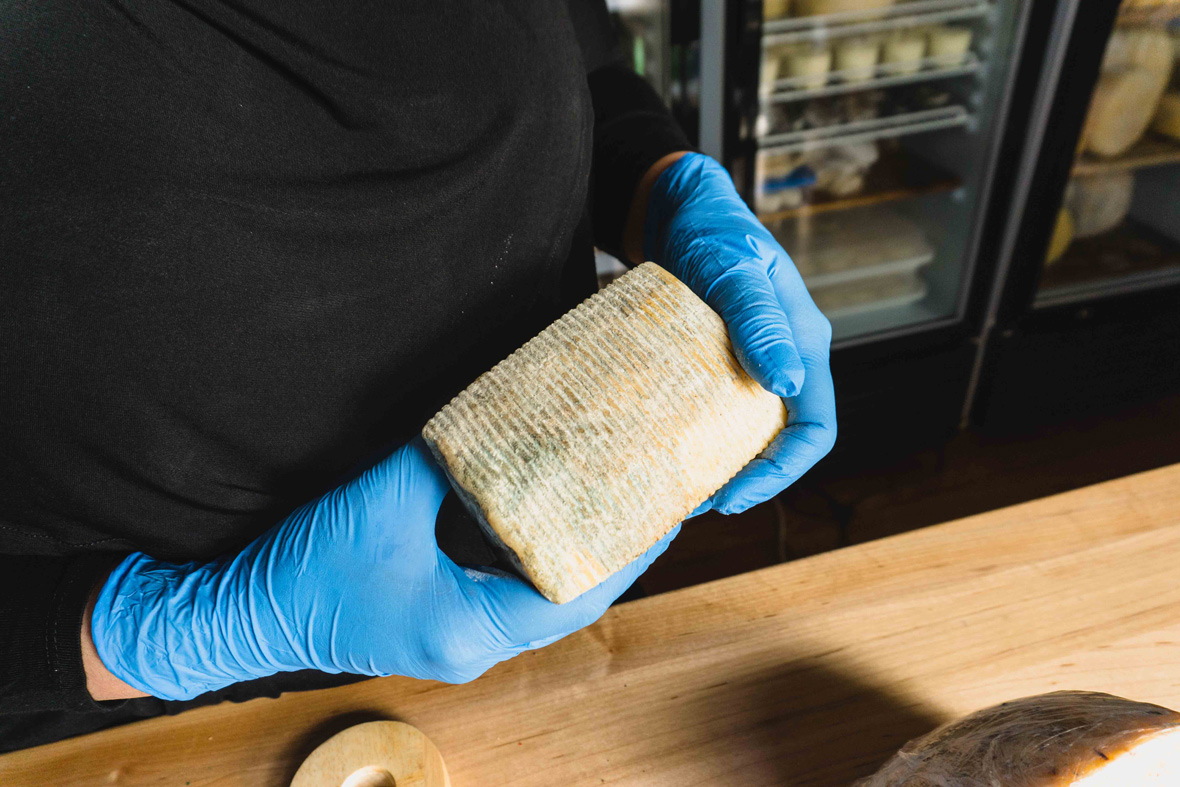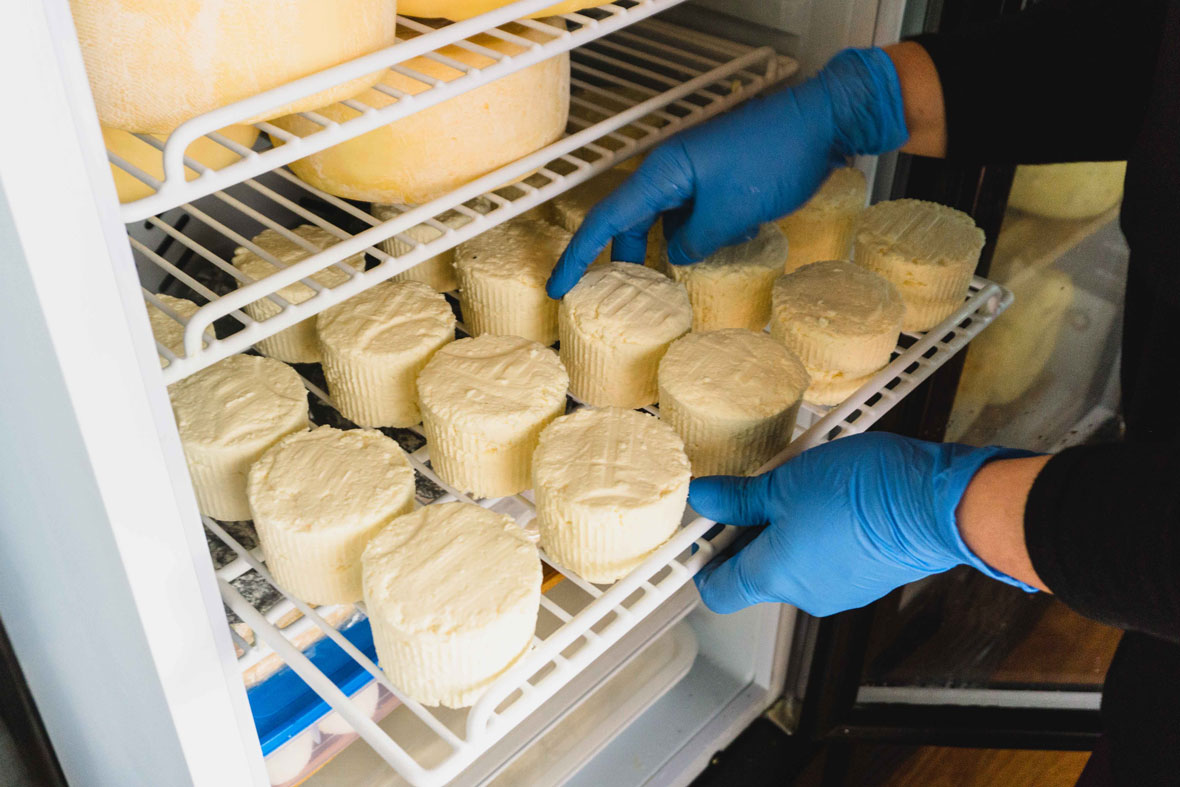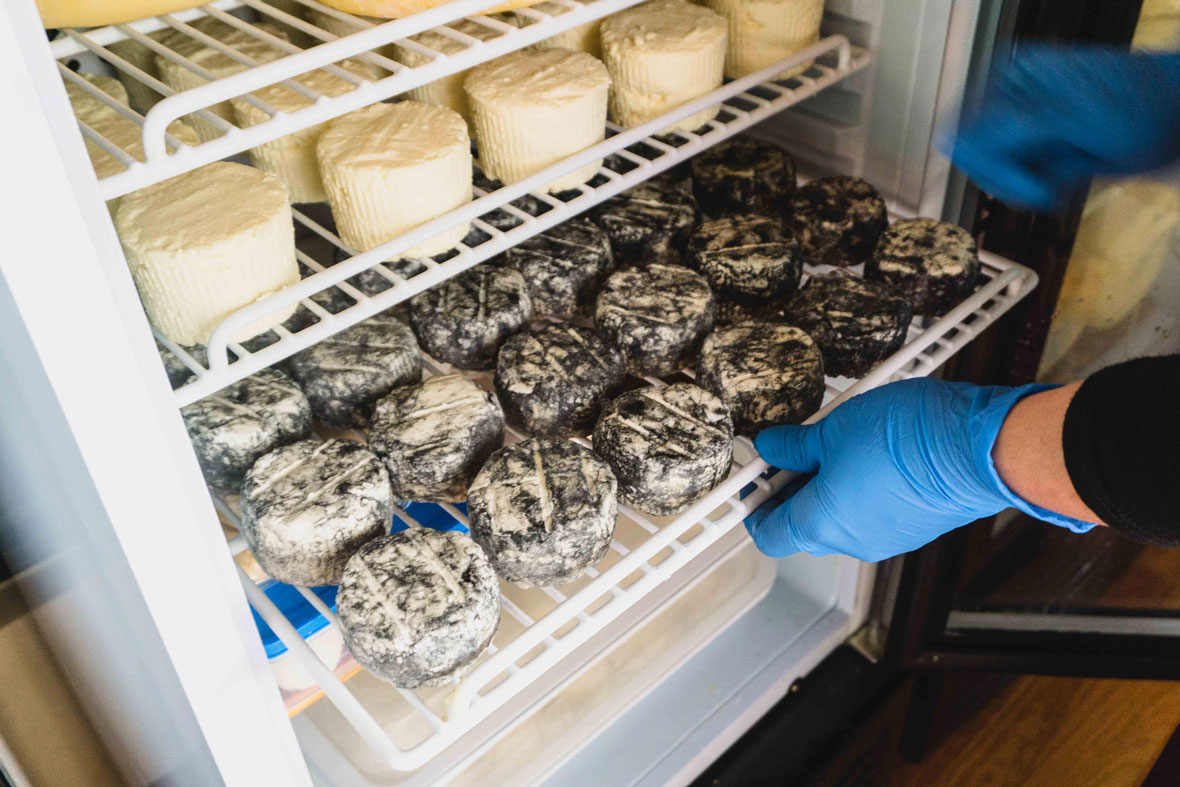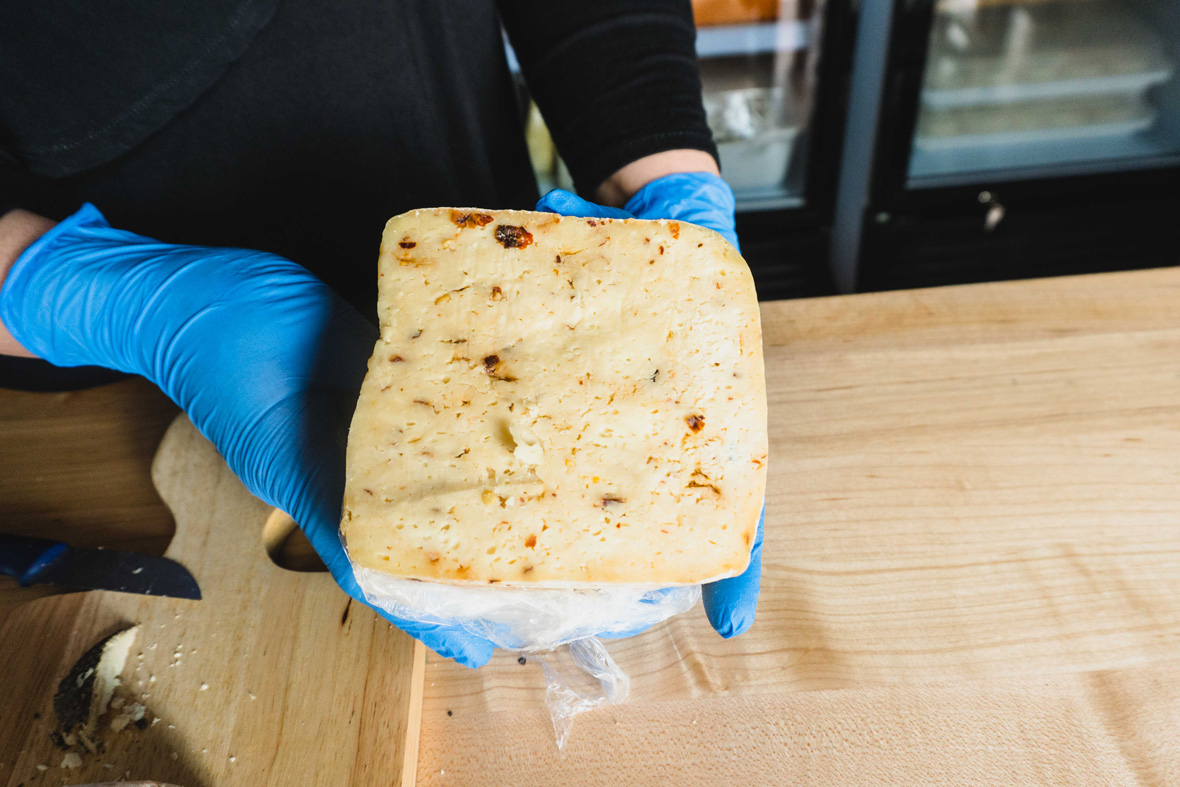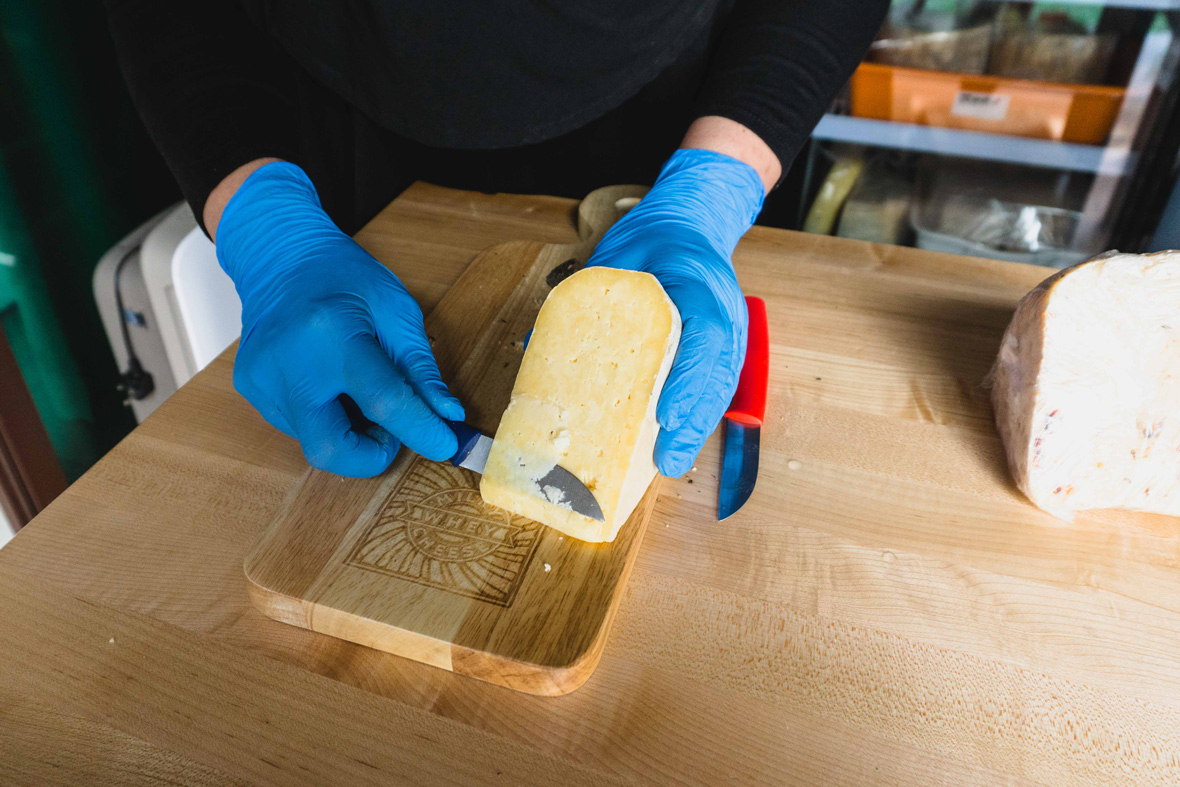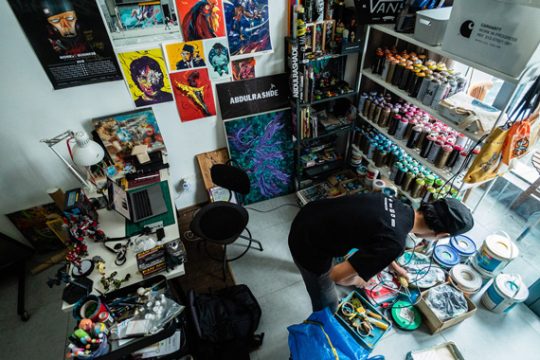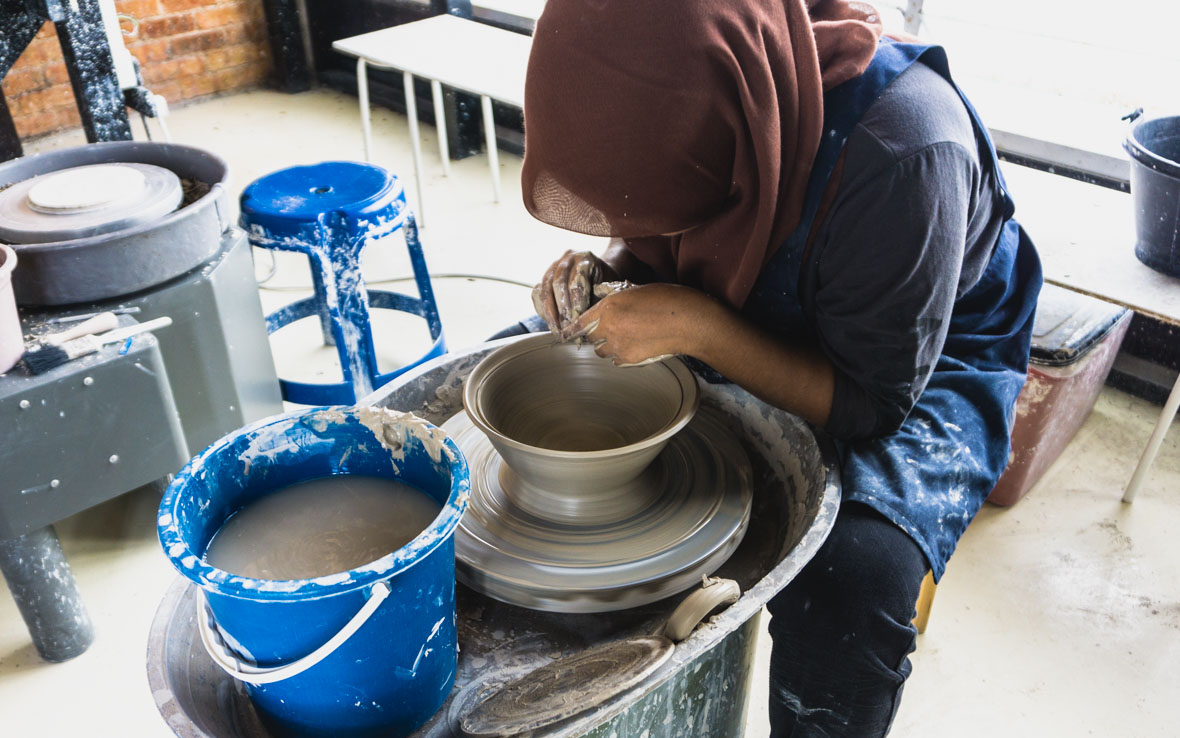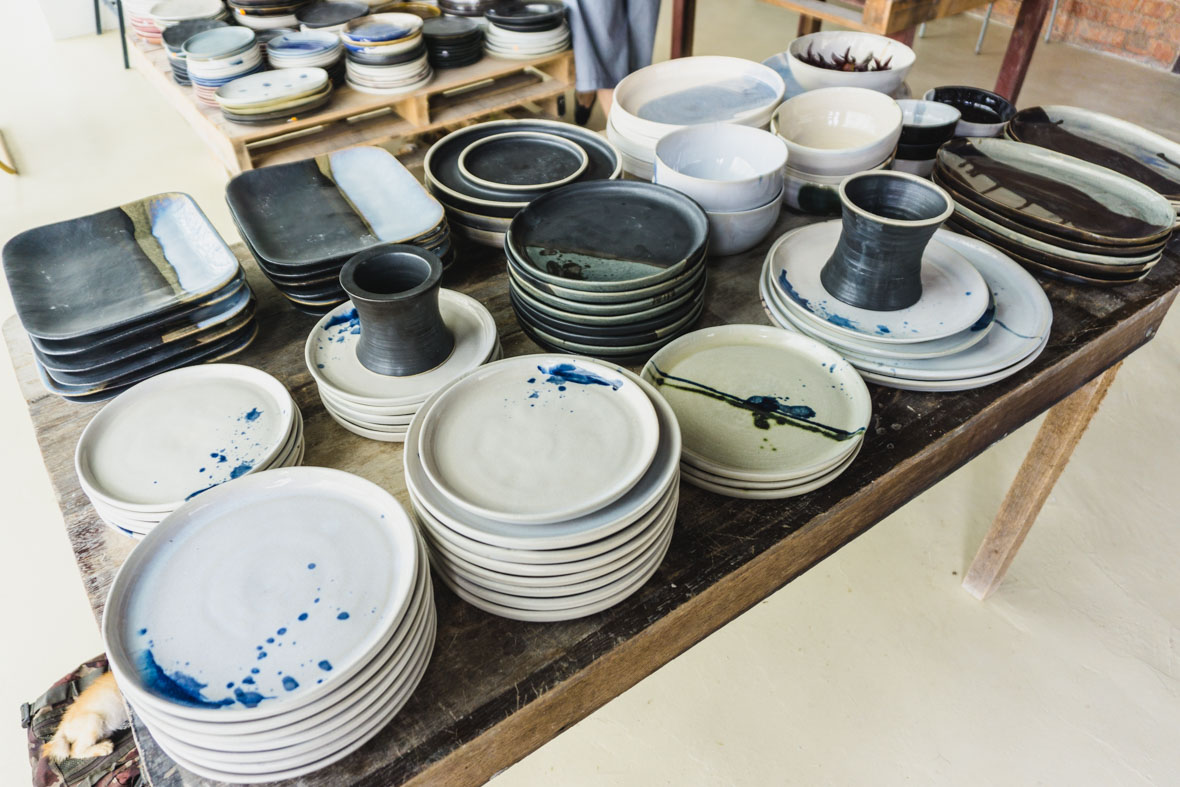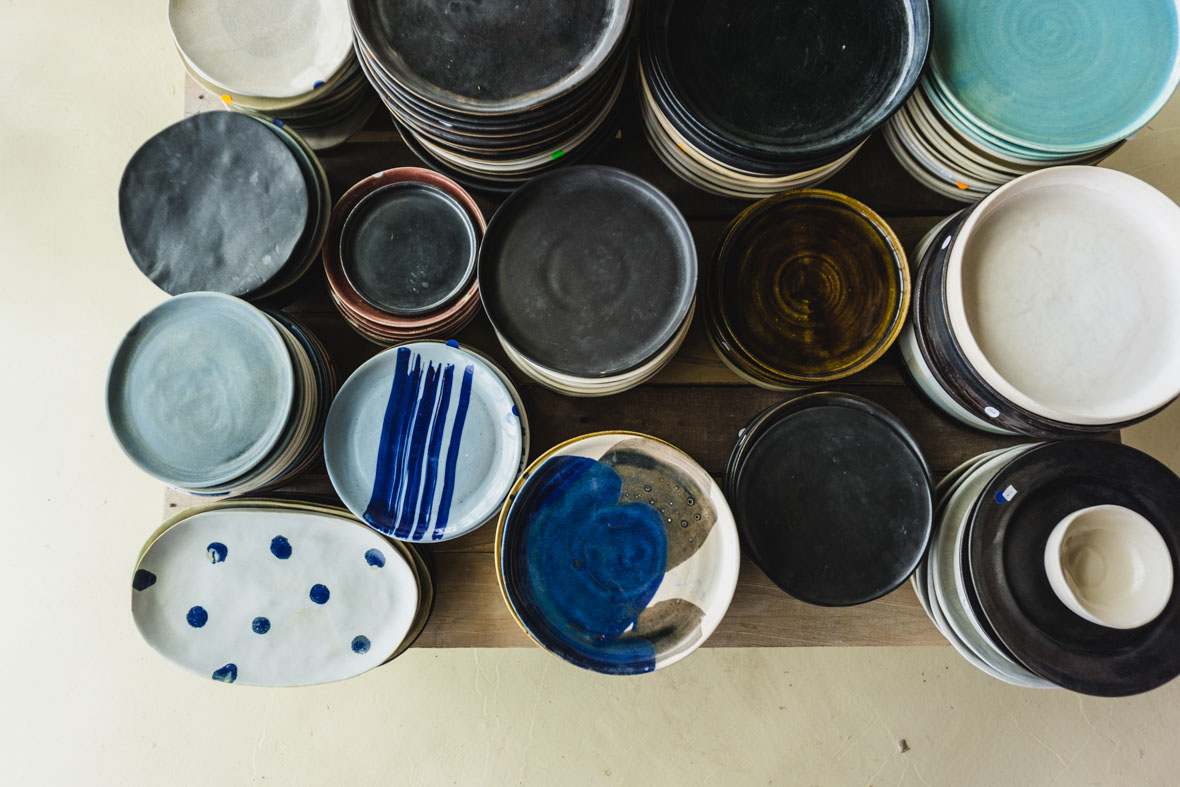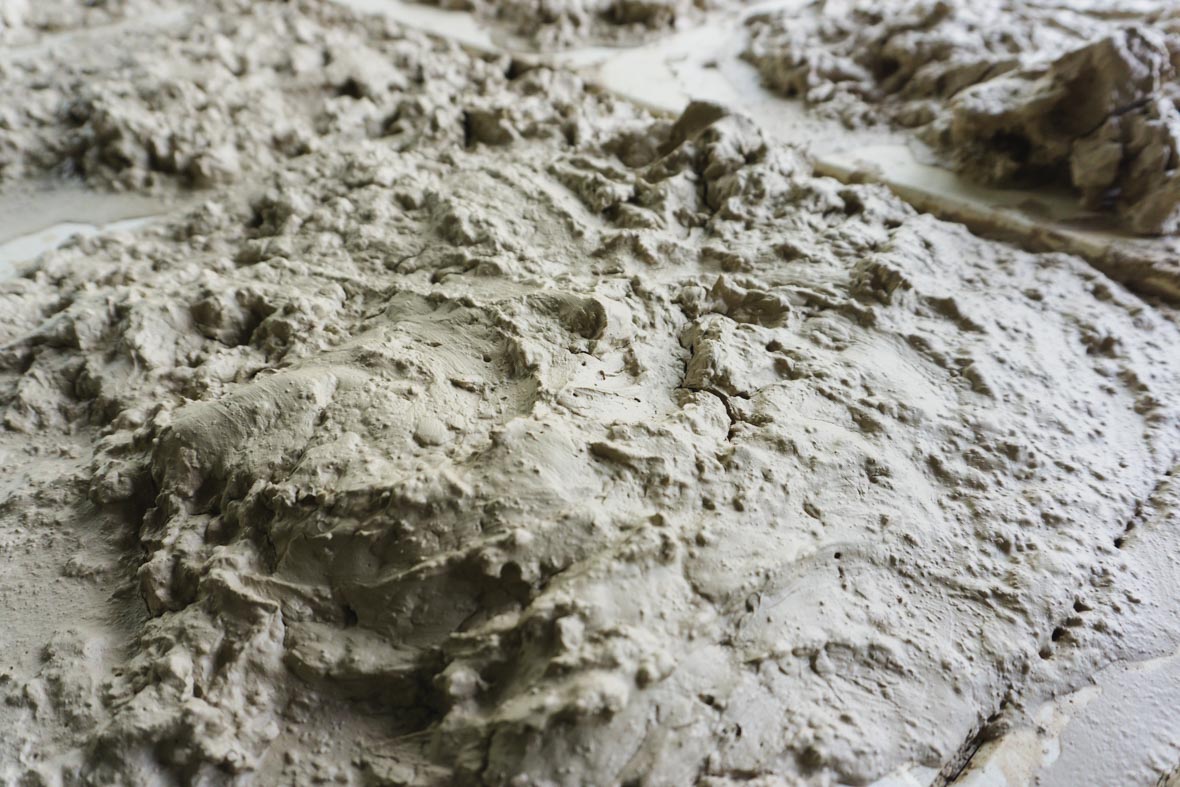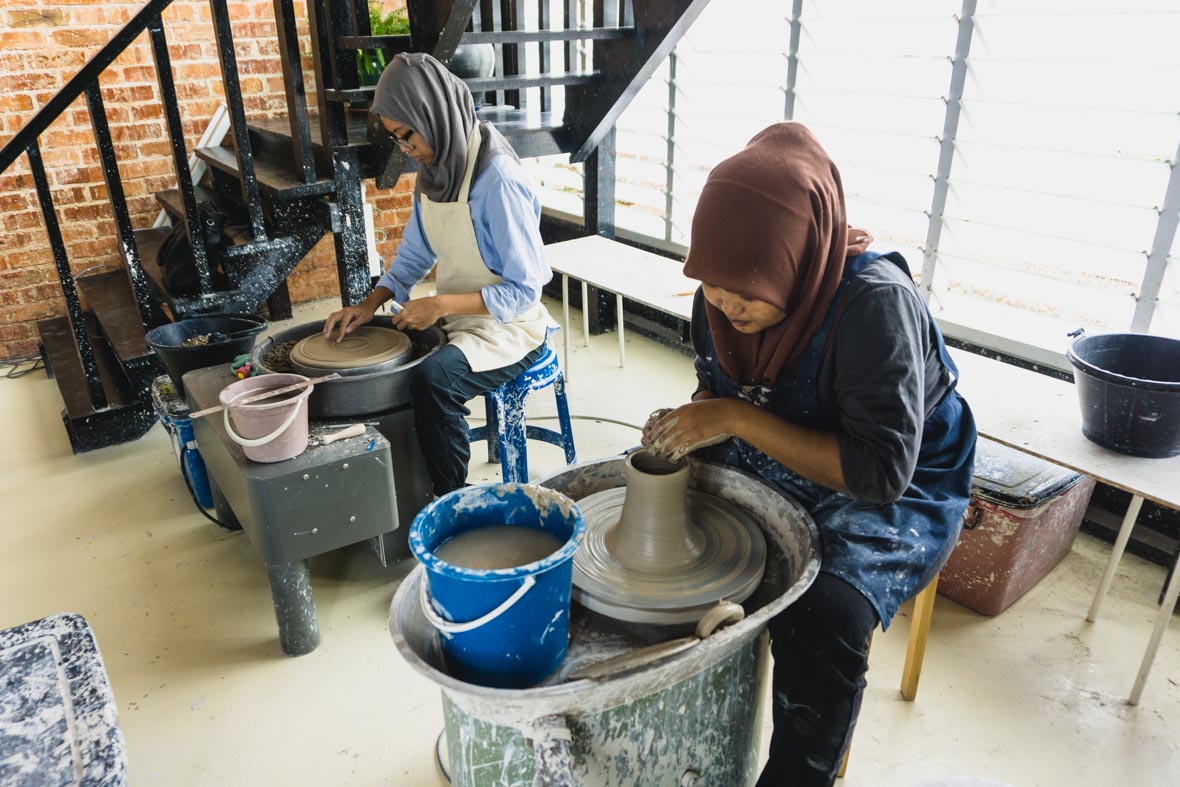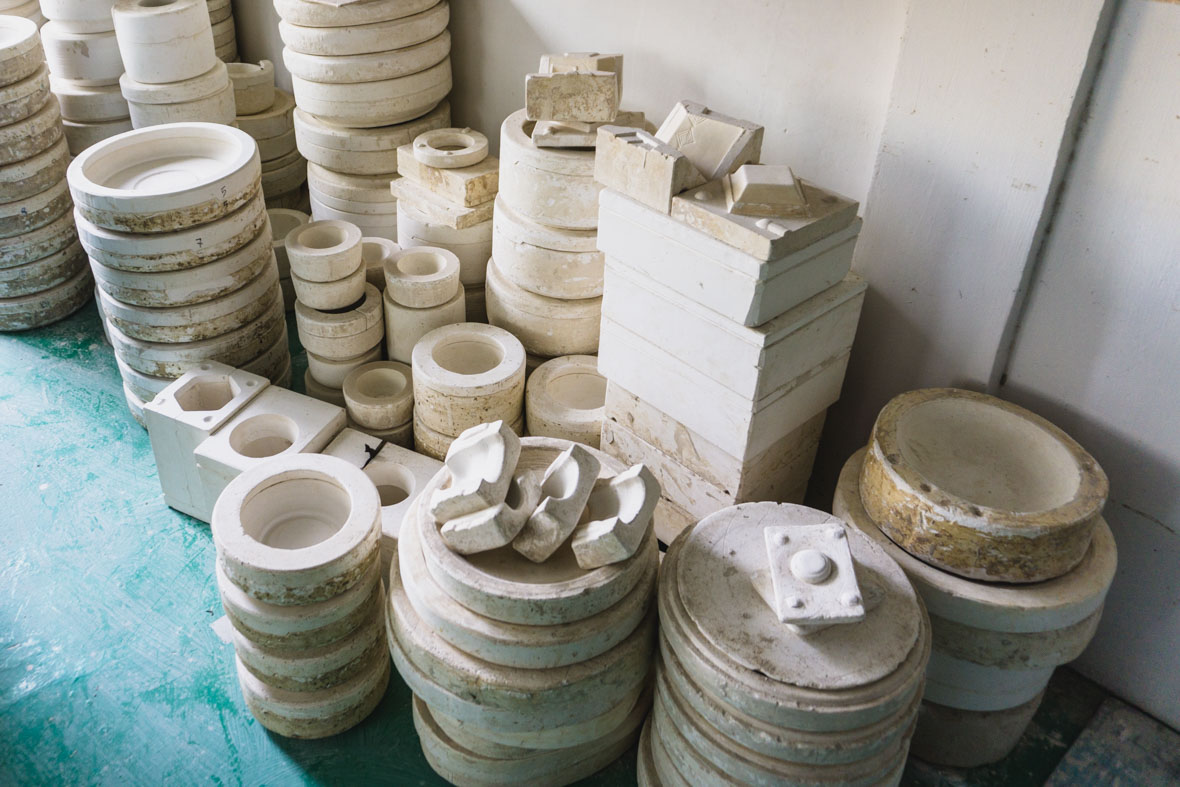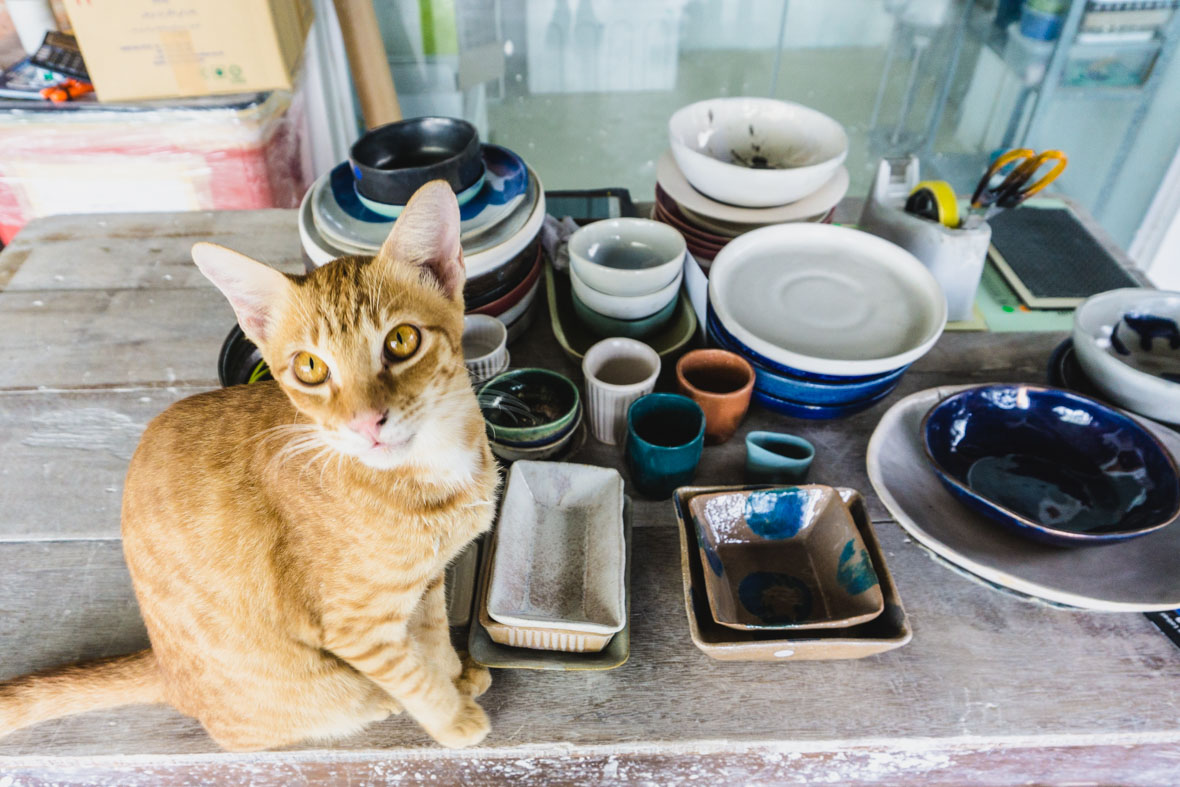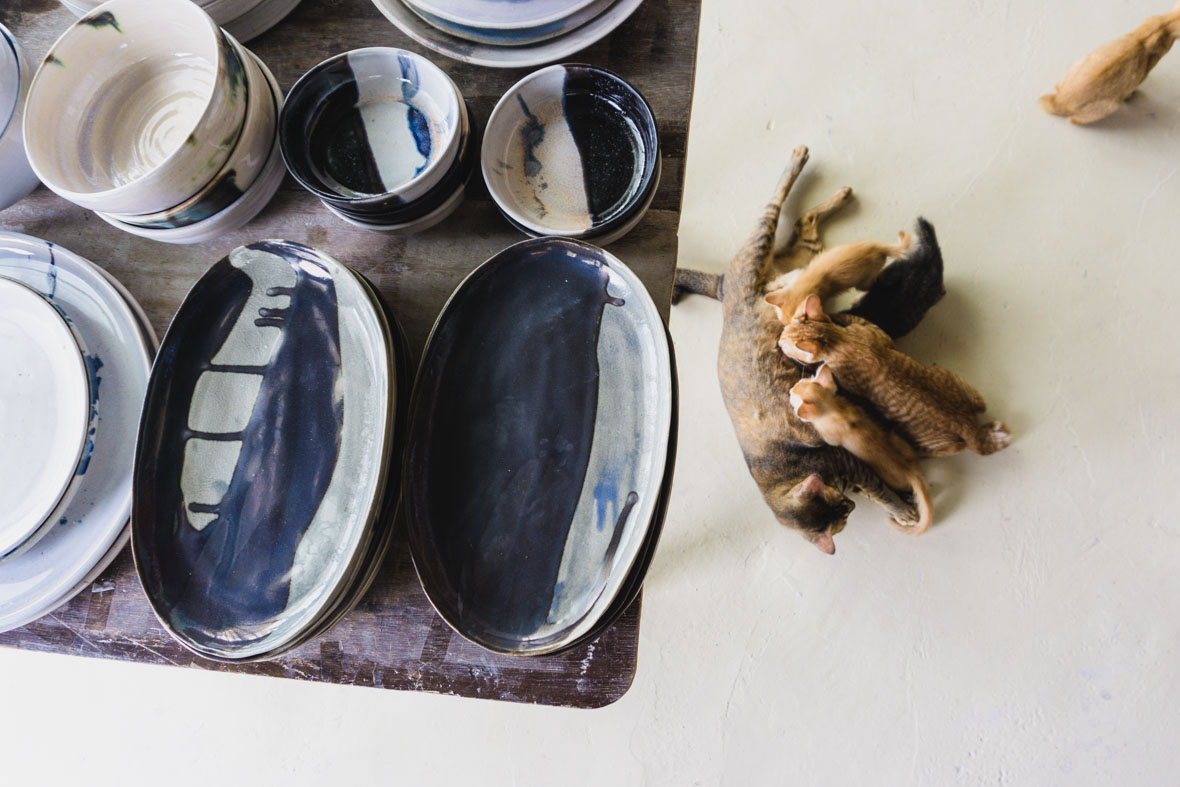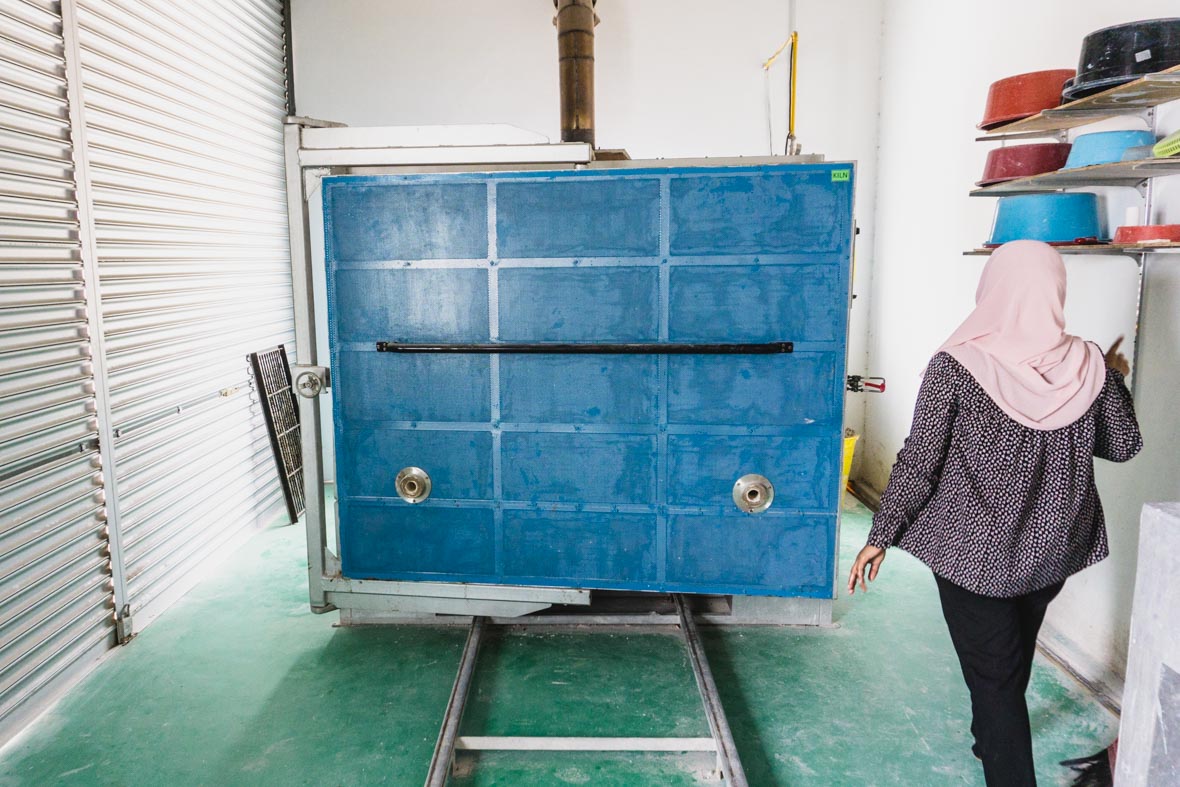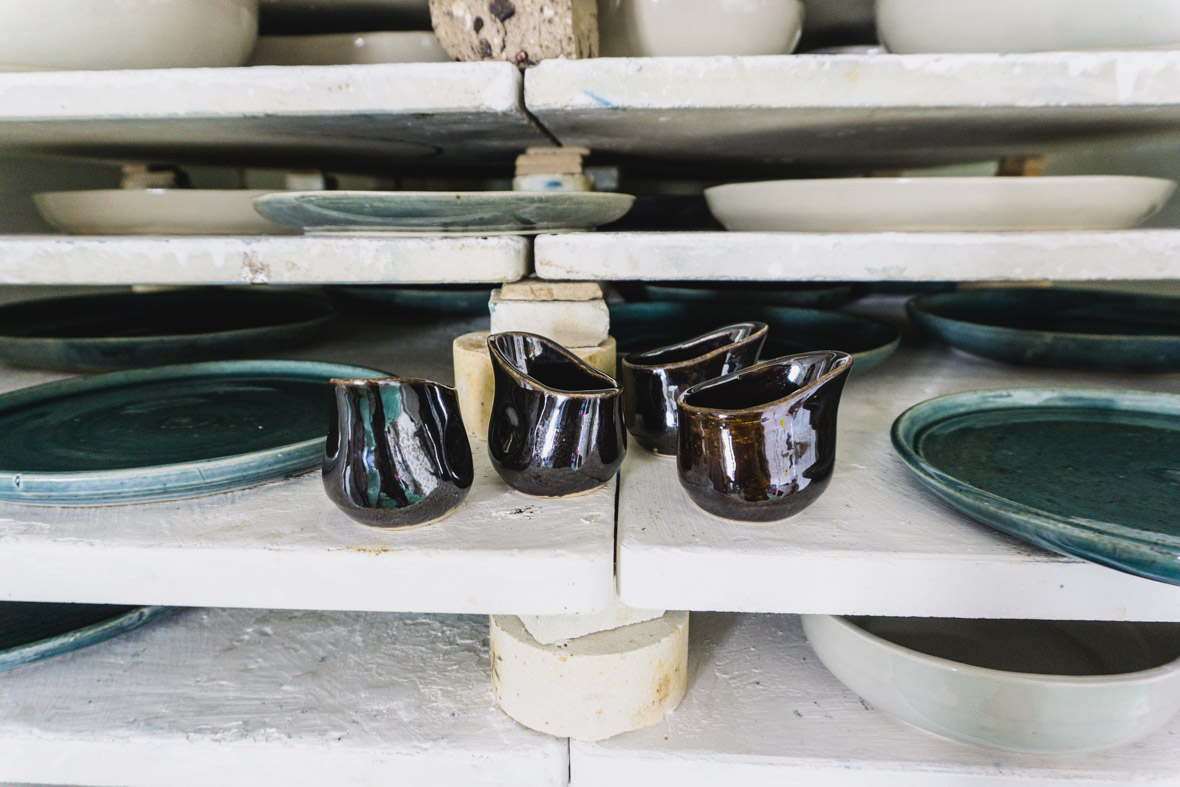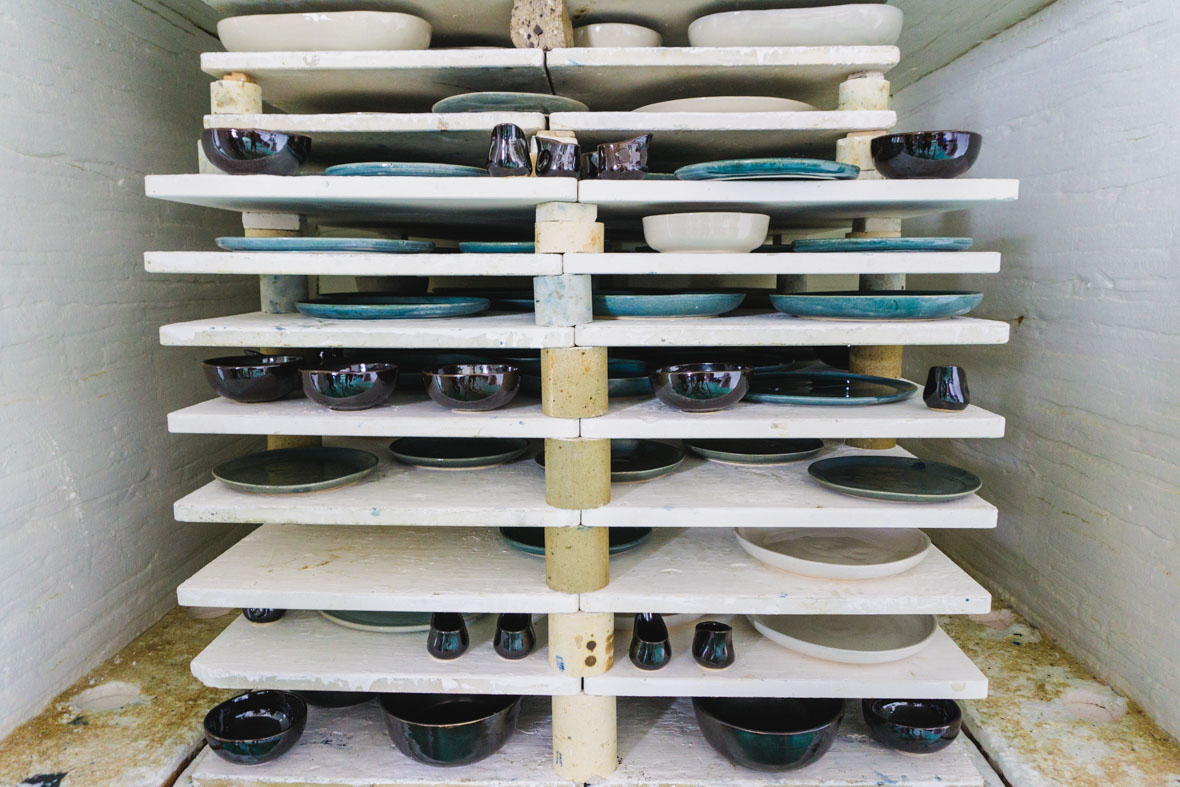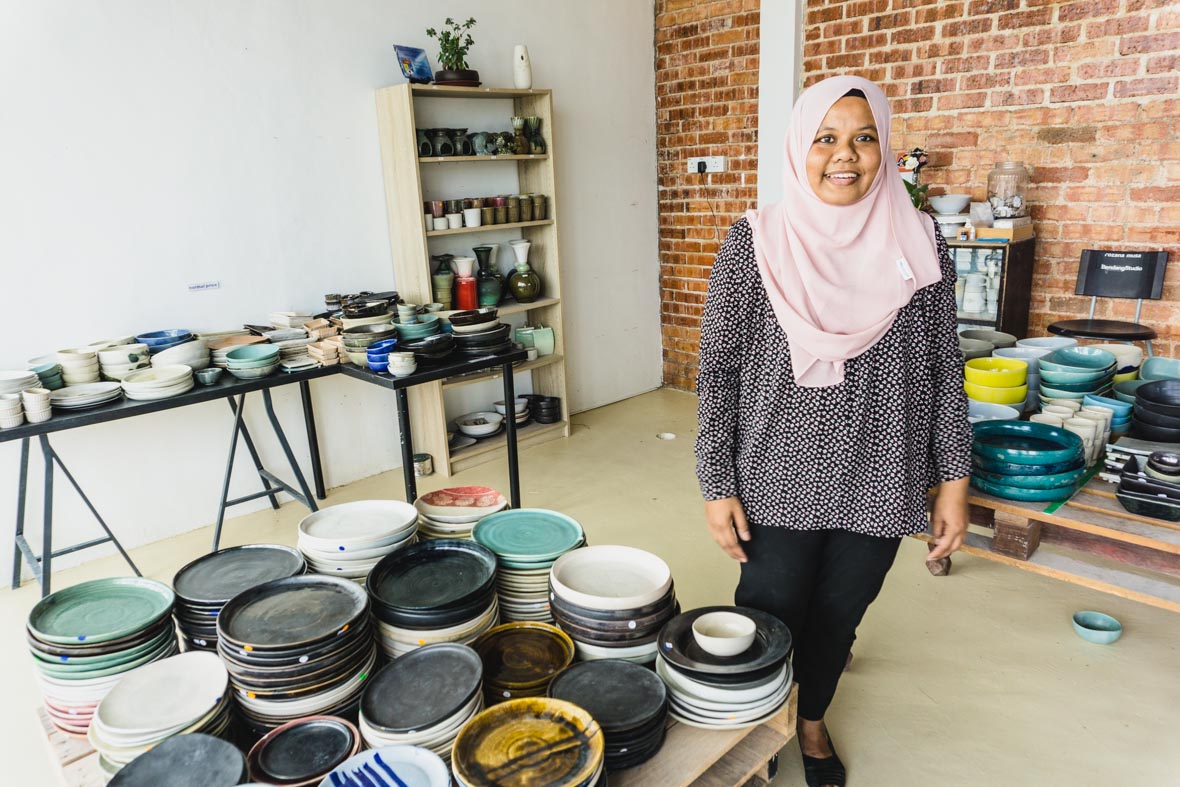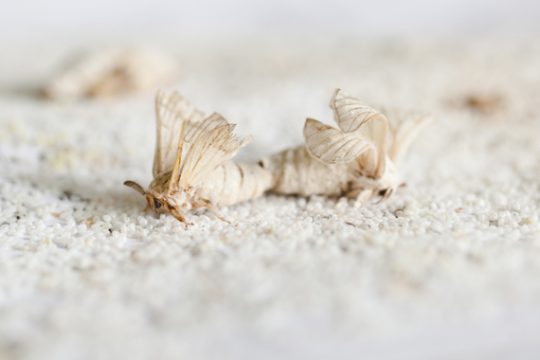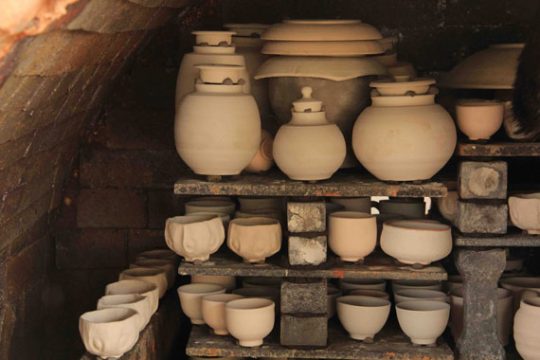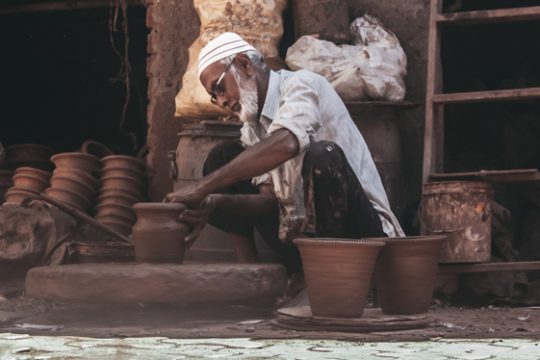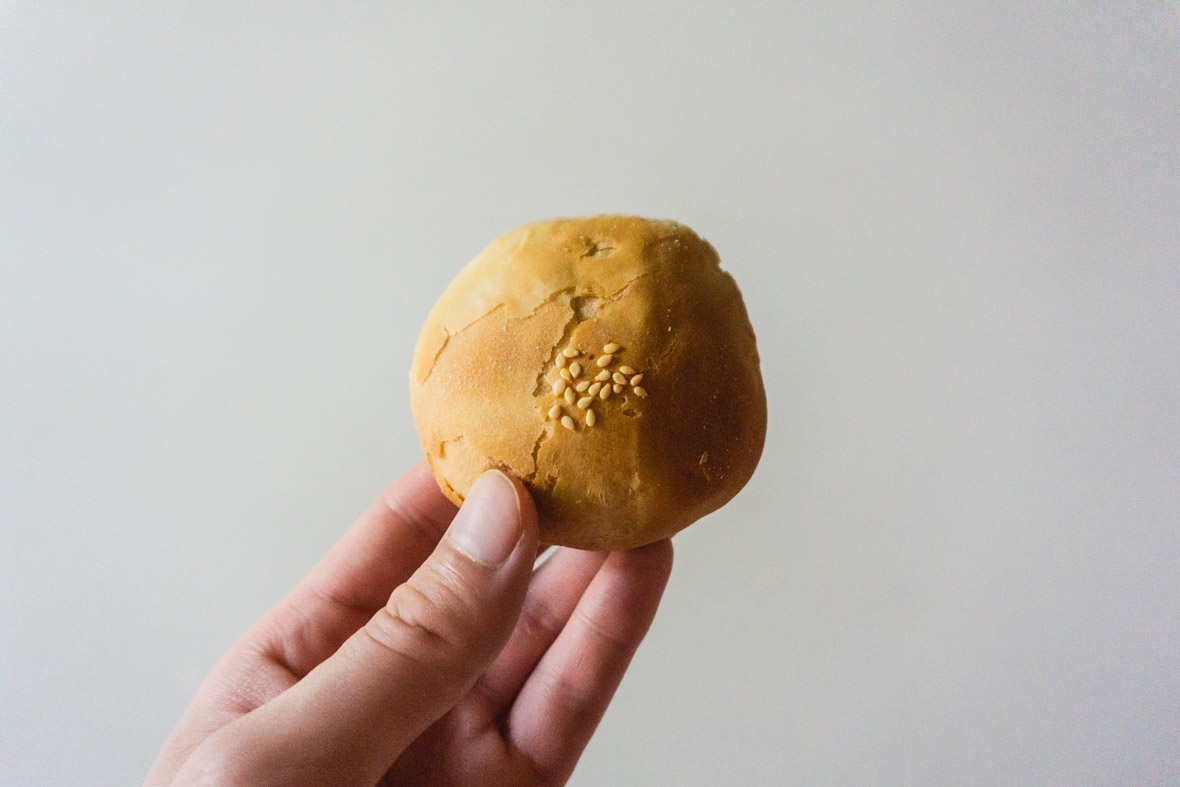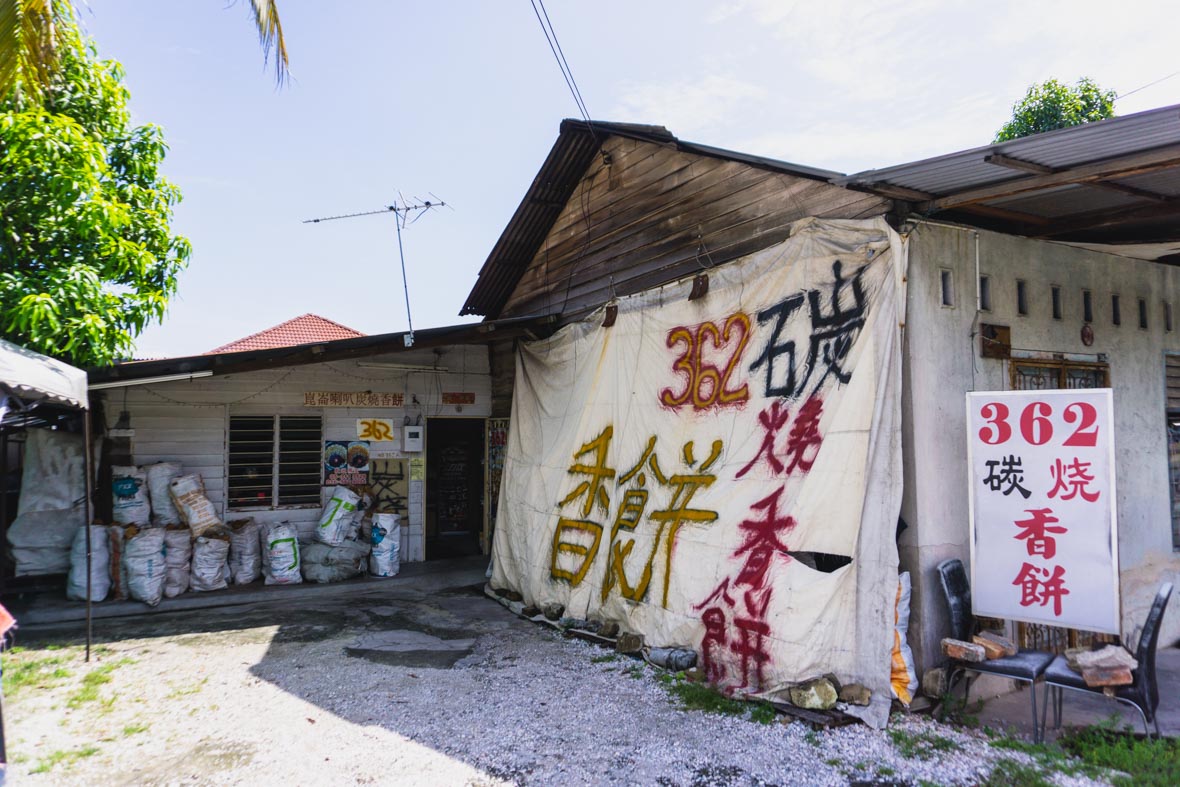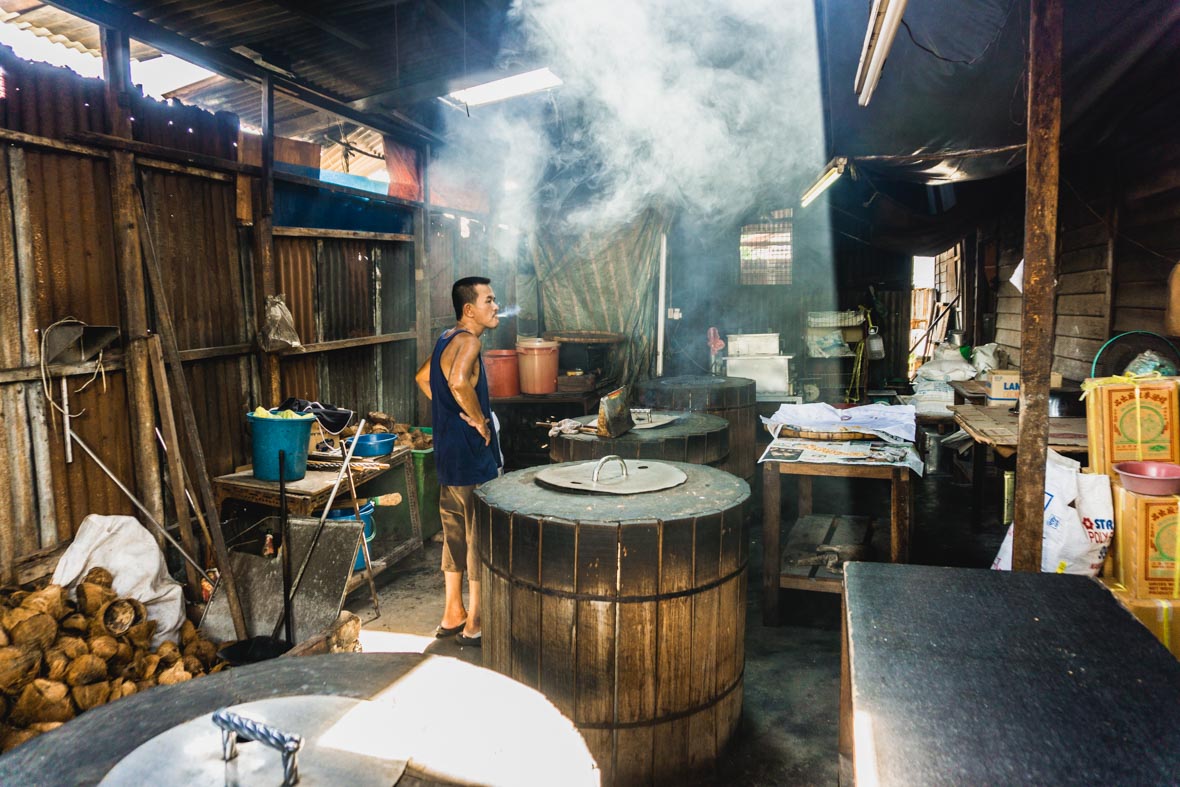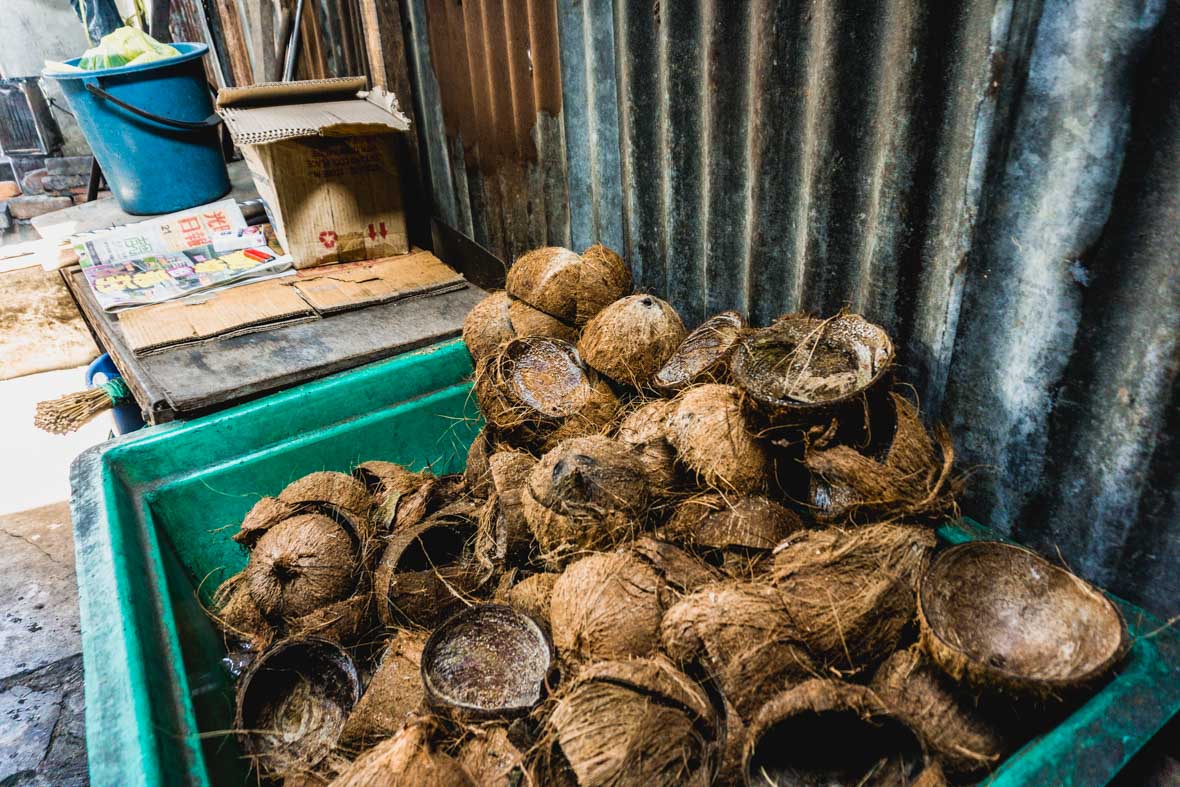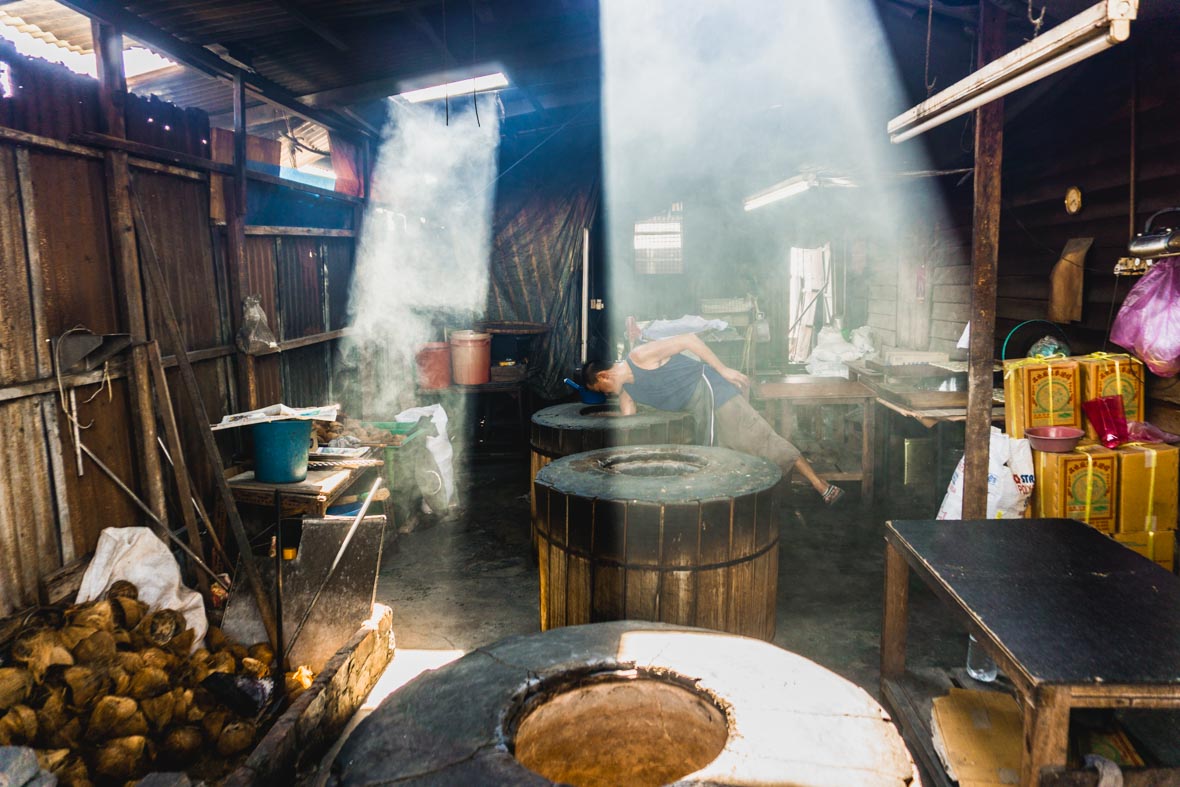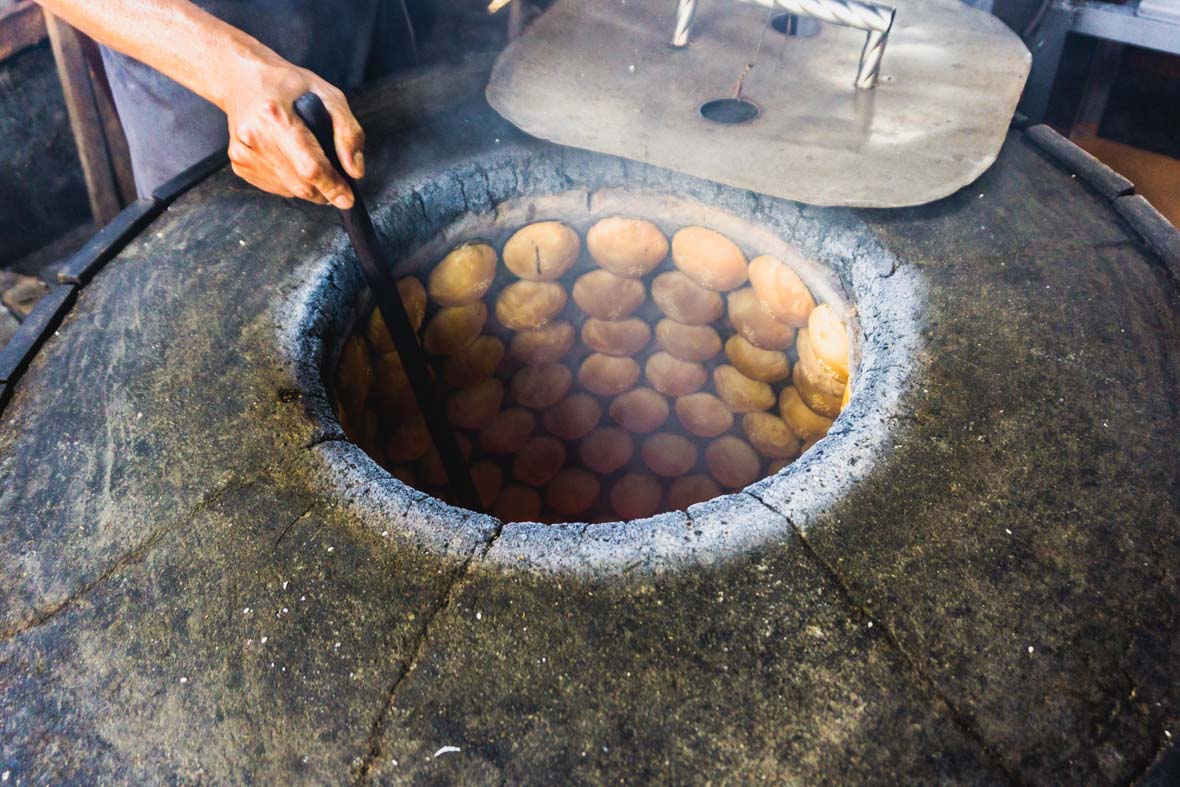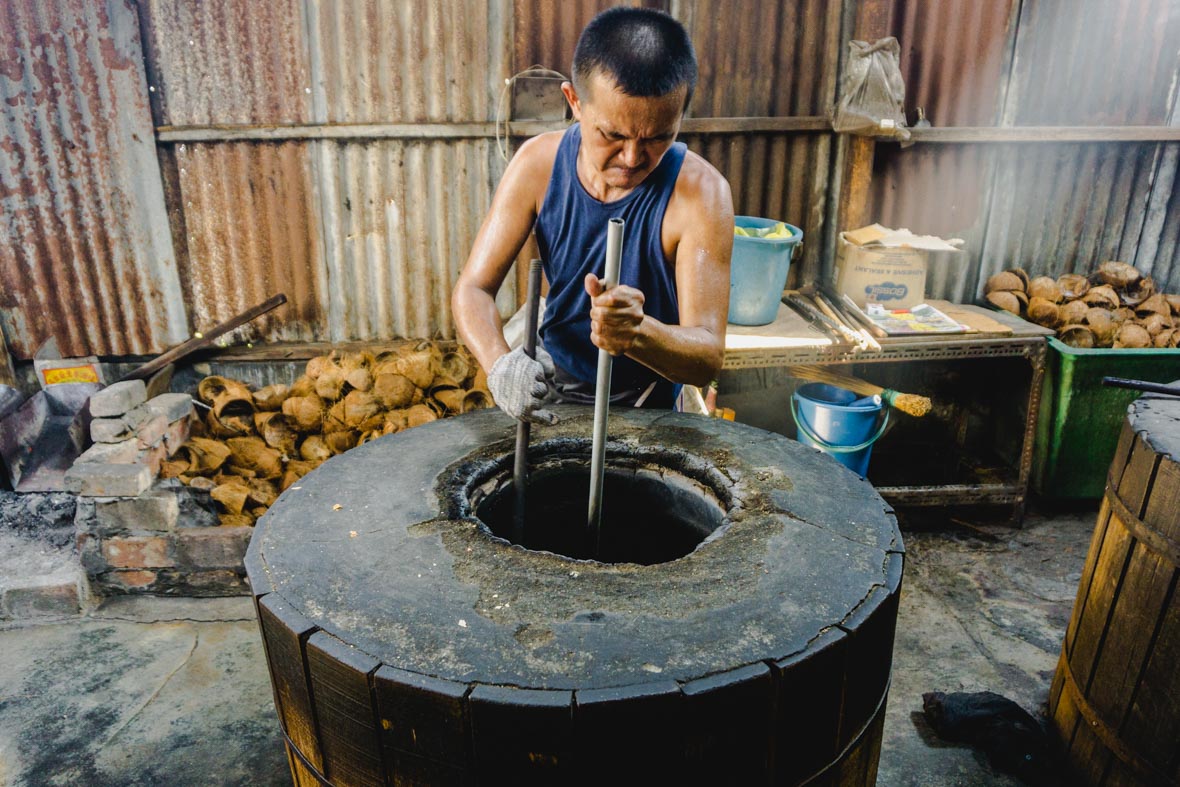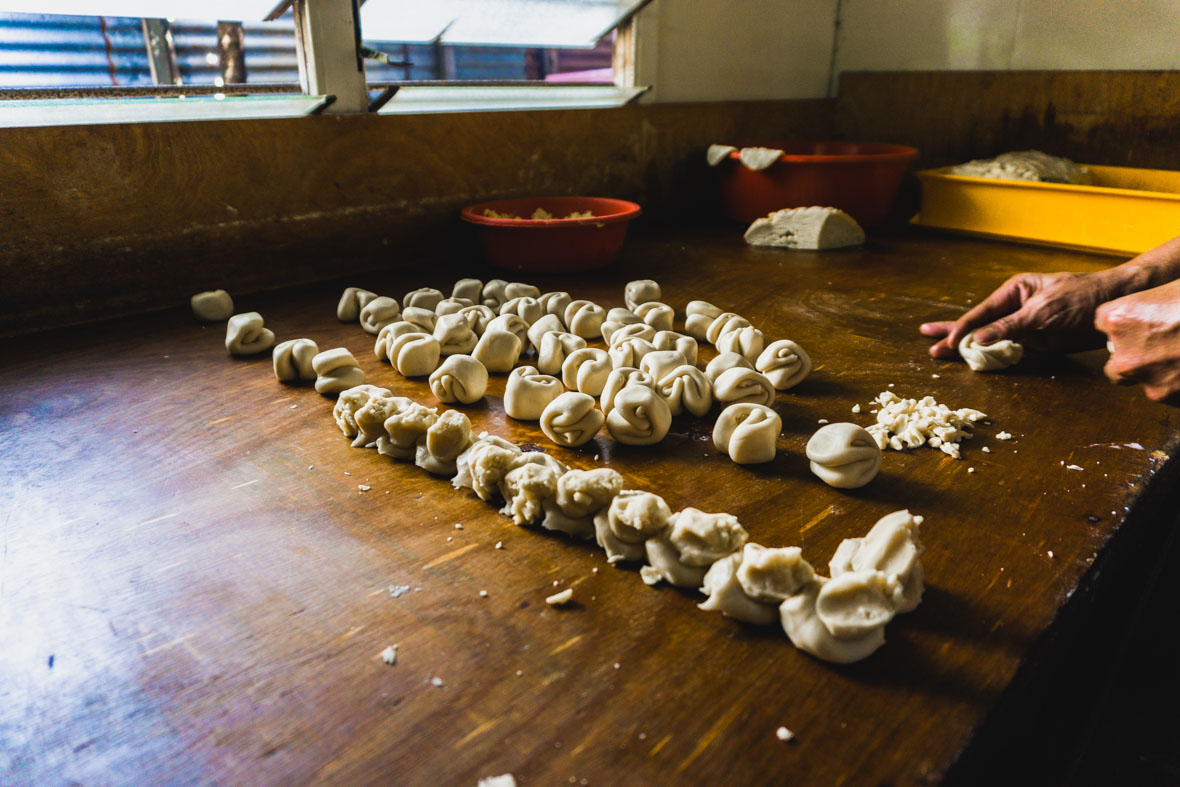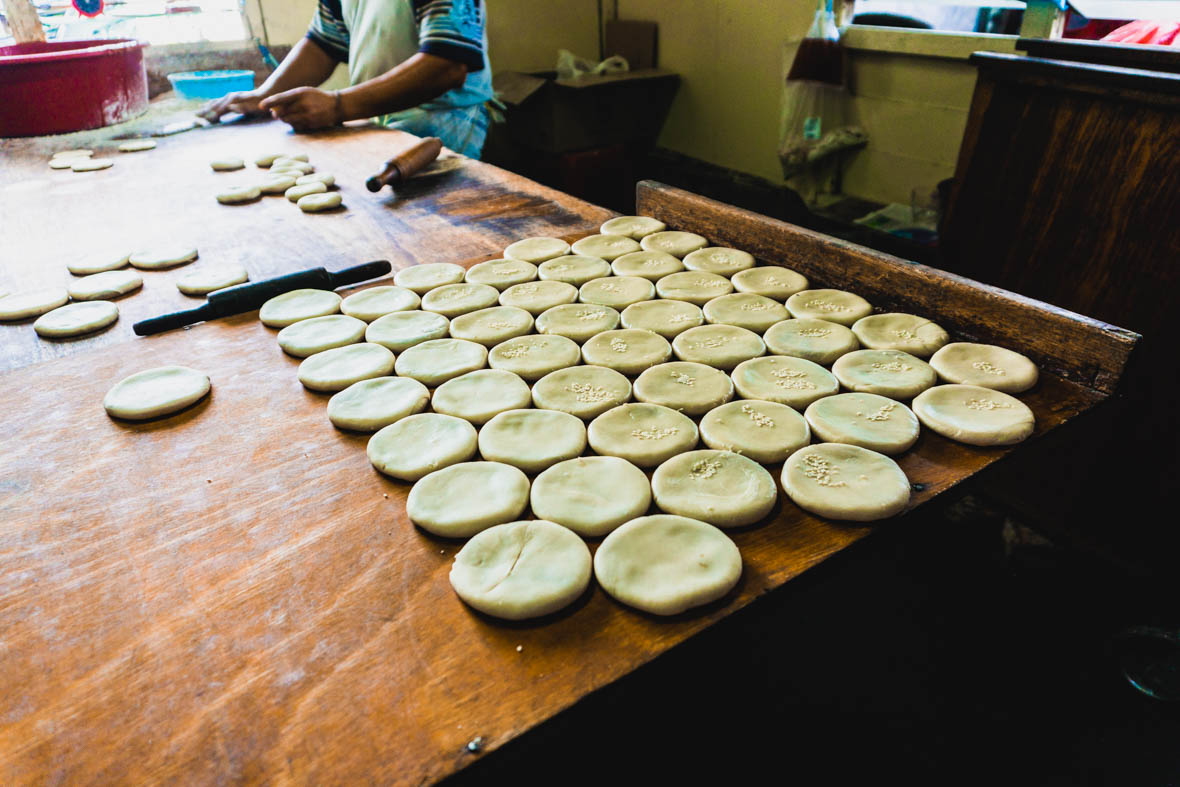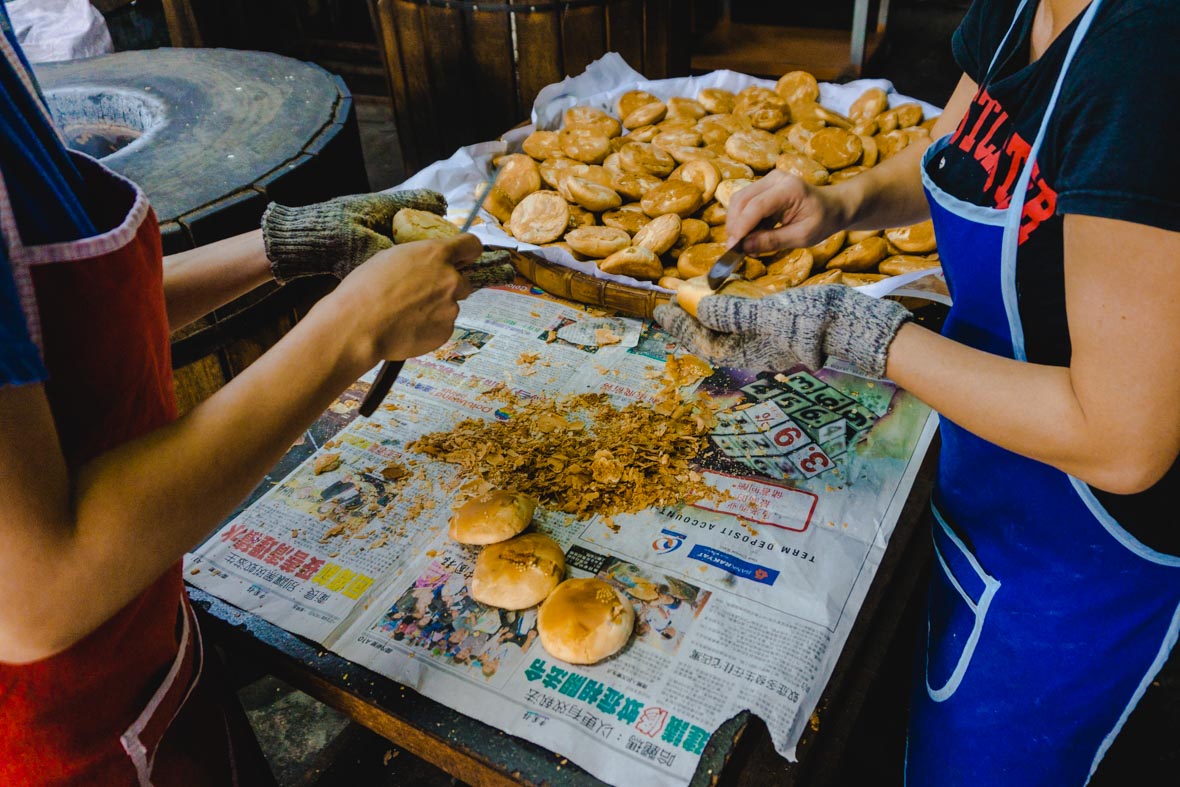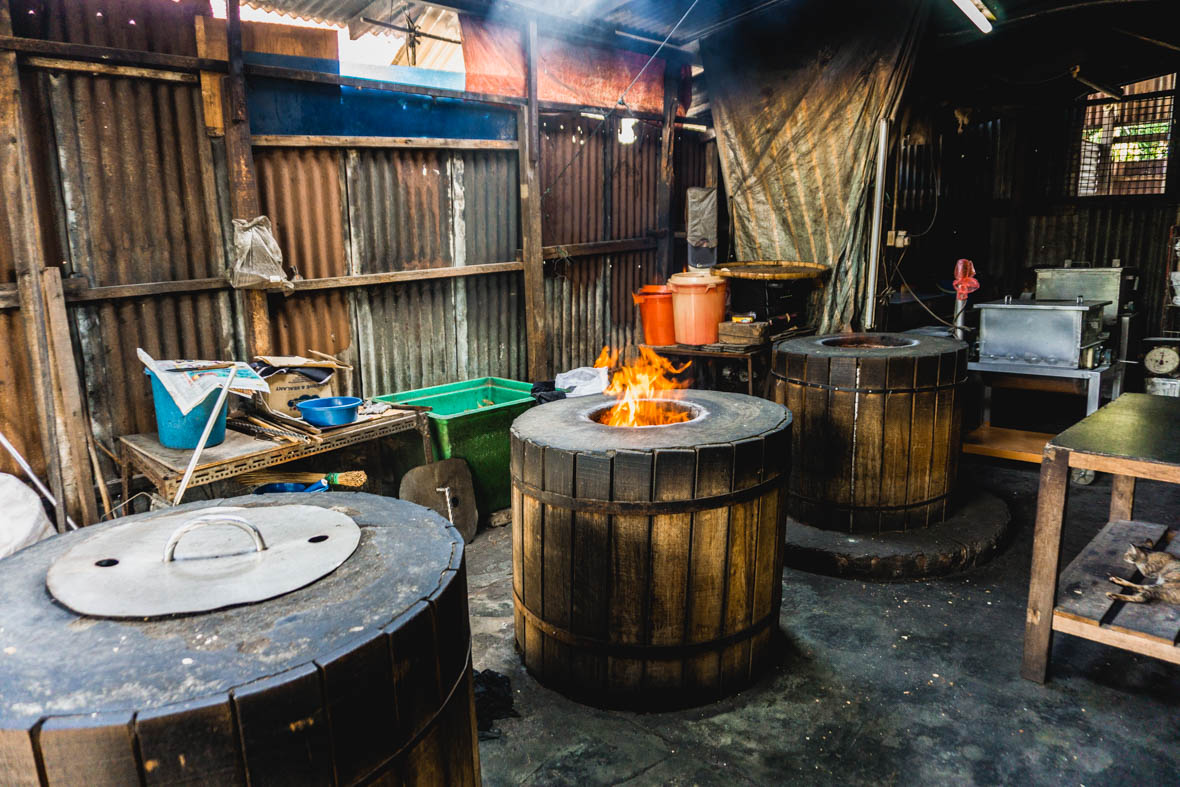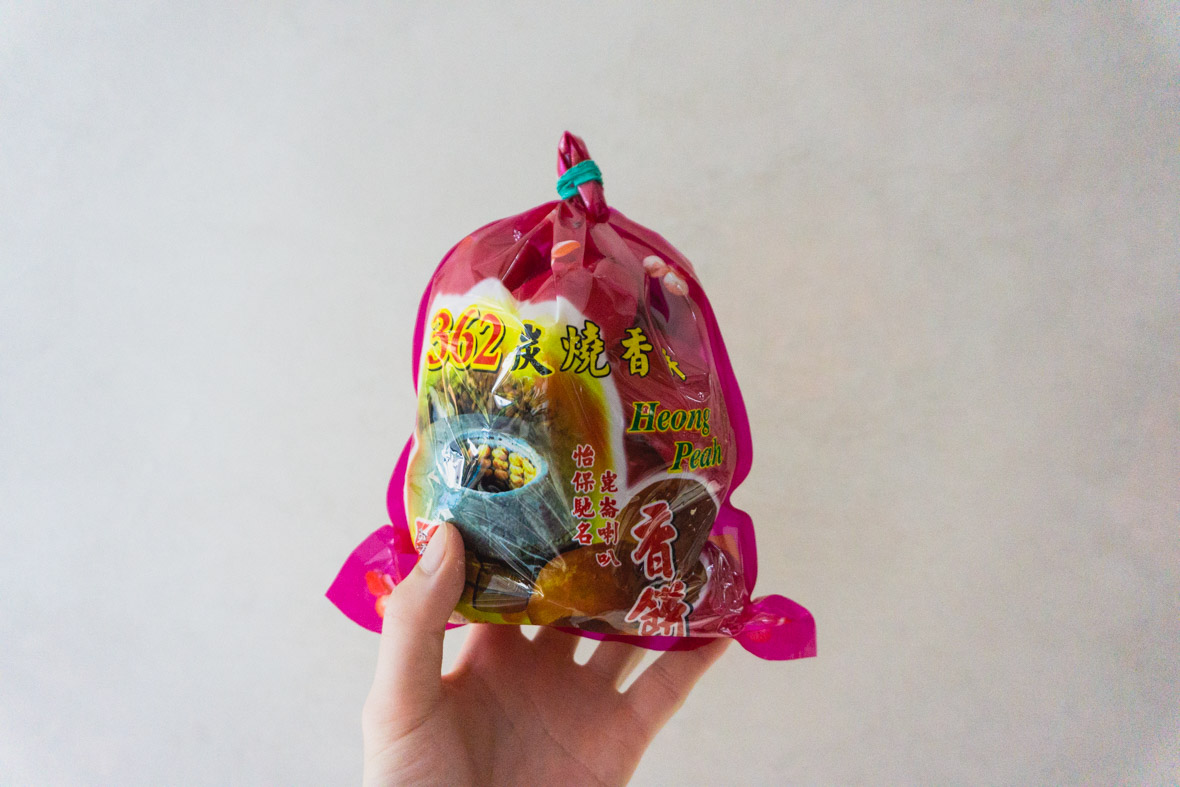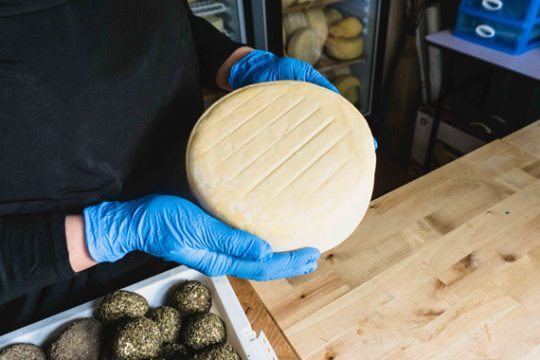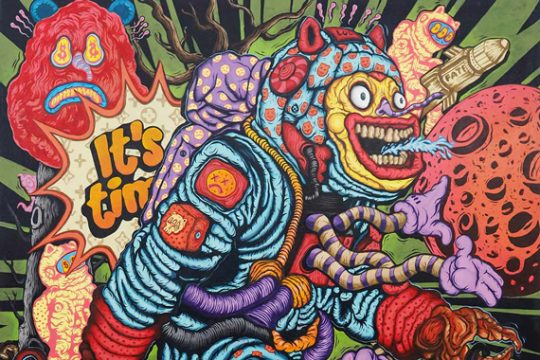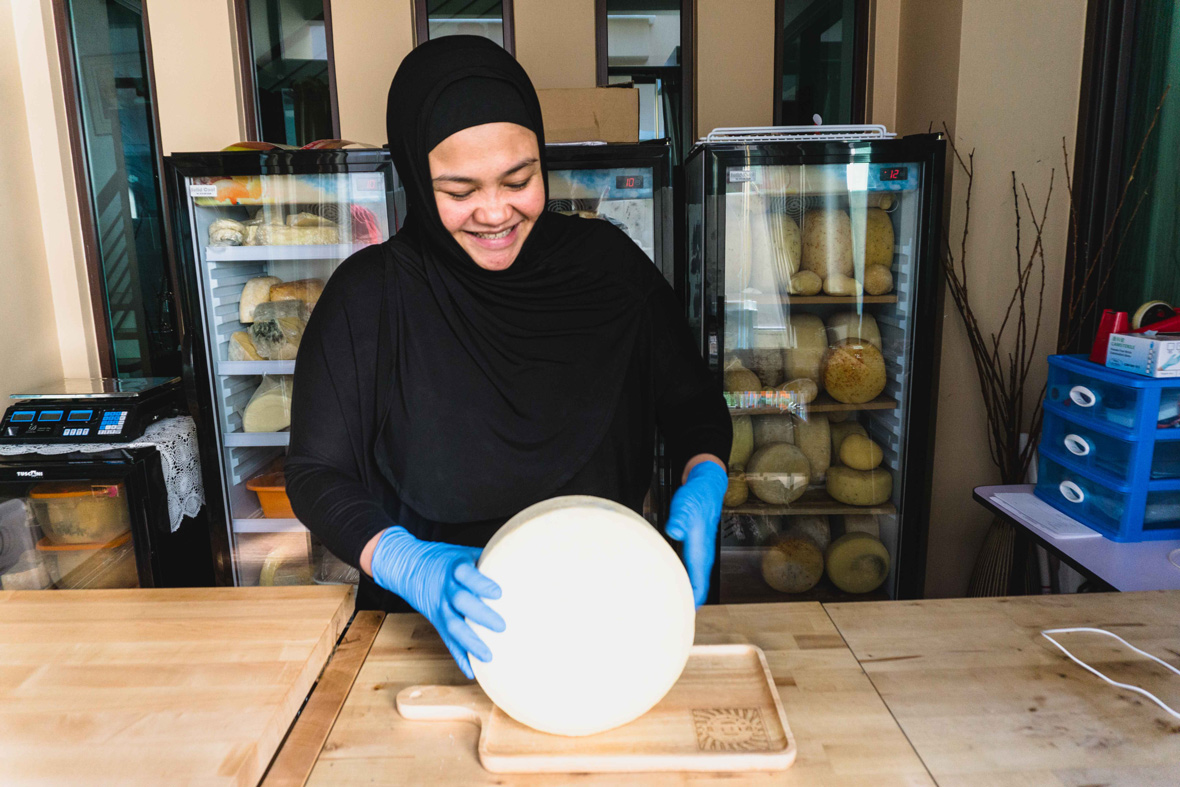
Cheddar, Camembert, Gouda, Gorgonzola, Reblochon… These cheeses, in all their moldy, funky glory have been prevalent throughout our rich history with food, but nowhere else in the world is it more ingrained than in European food culture. Take the little Swiss town of Gruyères for example, in which a certain eponymous cheese has been its economic heartbeat for the past twenty decades. Or walk into any cheese shop in Paris, and you’ll find a steady stream of locals sniffing out and purchasing the rows and rows of Brie de Meaux, creamy Camemberts, funky Époisses, great moldy wheels of Roquefort, and many other suspiciously over-ripened, unlabeled cheeses. Cheese has always been synonymous with European culture, there’s no doubt about that.
In the past decade however, there’s been a quiet cheese revolution pervading through Asia, with artisanal cheesemakers like Liu Yang of China and Tina Khan in India paving the way for a greater appreciation for cheese in their respective countries. In the midst of it all, Malaysia has had its own surge of cheesemakers too, with artisans popping up in Kuala Lumpur, Sarawak, and even Langkawi. Most notably, Annisa Iwan, an Indonesian cheesemaker now residing in Kuala Lumpur, has managed to combine her strong base of European cheesemaking methods with a local agenda (she sources her milk locally, adapts her recipe to the Malaysian climate, and sells her cheese to a largely Malaysian clientele). And through her punnily-named Milky Whey Cheese business, she’s been steadily converting many local cheese doubters into lifelong cheese aficionados.
芝士,又称奶酪。 切达奶酪(Cheddar)、卡门贝尔奶酪(Camembert)、莫比尔奶酪(Morbier)、戈尔贡佐拉奶酪(Gorgonzola)、瑞布罗申奶酪(Reblochon)……在人类美食历史上,这些通过发酵制成的食物,味道奇怪,有时还长着霉斑,却是一直以来备受人们追捧的美食,尤其是在欧洲,奶酪更是其饮食文化中的重要部分。譬如,在瑞士小镇格鲁耶尔(Gruyères)盛产着一种和小镇同名的奶酪(没错,就是“格鲁耶尔”奶酪),在过去二十年来,这种奶酪可以说是当地的经济命脉。而在巴黎,随便走进一间奶酪店,你都能看到当地人正凑着鼻子在一排排奶酪前闻着,有莫城布里奶酪(Brie de Meaux)、口感柔滑的卡门贝尔奶酪(Camemberts),散发着刺激异味的埃普瓦斯奶酪(Époisses)、洛克福特(Roquefort)奶酪,当然,还有许多疑似发酵过度、没有标签的奶酪。总之,奶酪几乎可以说是欧洲的代名词。
然而,在过去的十年里,亚洲却悄然出现了一场“奶酪革命”,涌现了许多手工奶酪制作者,譬如来自中国的刘洋和印度的 Tina Khan,他们都是奶酪文化的铺路者。而在马来西亚的吉隆坡、沙捞越和兰卡威,手工制作奶酪的人也越来越多,来自印度尼西亚的 Annisa Iwan 就是其中的佼佼者。Annisa 现在住在吉隆坡,她将自己精通的欧洲奶酪制作工艺与本地食材相结合,从当地采购牛奶,根据马来西亚的气候调整奶酪制作方法,她的客户也是以马来西亚人为主。她还给自己的奶酪公司起了一个有意思的名字“Milky Whey Cheese”,她制作的奶酪,让当地许多对奶酪无感的“路人”变成了忠实粉丝。
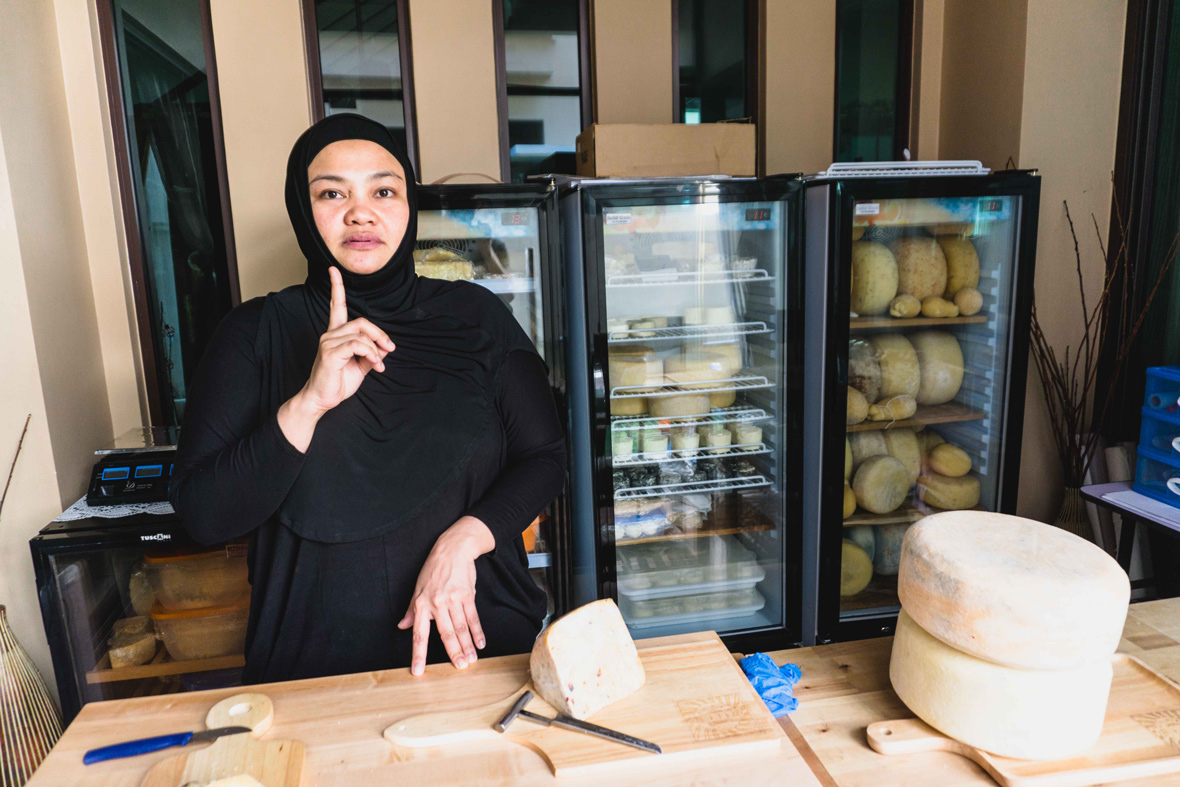
Full disclaimer: I am one such convert. As a self-professed cheese lover, I initially had large doubts about how cheeses made from the milk of Malaysian cows could ever begin to compare to the great Gouda, Cheddar, and Parmigiano-Reggiano of Europe. But as Annisa has proven, I was dead wrong.
Not only are her cheeses up to par with those stalwart Europe cheeses, her experimental, almost zany, approach to cheesemaking has many Malaysians heaping on praises. Some of her Tomme cheese wheels, for instance, have been spiked with bird’s eye chilies just to kick the piquancy up a notch to satiate the spice-loving Malaysian palate. She’s even infused local produce like bamboo leaves and Sarawak peppers into her cheeses, the latter of which she uses in a soft-style cheese she adoringly named Sarawak.
讲真,我也是“路转粉”其中之一。一开始,自诩为奶酪爱好者的我,很是怀疑用马来西亚当地牛奶做的奶酪怎么可能做出媲美欧洲的奶酪?!但 Annisa 证明,我这种想法大错特错。她制作的奶酪简直太好吃了!经她制作的豪达奶酪(Goudas)、瑞布罗申奶酪(Reblochon)和卡门贝尔奶酪(Camemberts),丝毫不逊色于欧洲的原产奶酪。除此之外,她还以十足的实验精神、甚至可以说有点奇特的奶酪制作方式赢得了许多马来西亚人的称赞。譬如,为了迎合马来西亚人偏辣的口味,她在一些多姆奶酪(Tomme)中加入鸟眼辣椒(Bird’s eye chili),升级其中刺激的辣味。她用一些本地特色食材制作奶酪,譬如一款她取名为“沙捞越”(Sarawak)的奶酪,就是加入了沙捞越胡椒制成的,甚至连竹叶都被她用来制作奶酪!
Raised in Indonesia, Annisa’s indoctrination into the world of cheese started at a young age. Her family had close ties with a Dutch family who visited every winter bearing gifts. “I still remember the three things they [the Dutch family] would bring – chocolate, pâté, and cheese. Those three things, even now, I still cannot live without!” Annisa recalls fondly. Although she no longer keeps in close contact with the Dutch family, those foods, especially cheeses, have clearly left a mark on her very being. Annisa likens it to drugs, saying “[It’s like how] you can’t just introduce crack to somebody and stop giving [it to] them. Cheese is addictive!”
在印尼长大的 Annisa,很小的时候就开始接触奶酪。每年冬天,一家来自荷兰的好友都会带着礼物去她们家作客。“我还记得他们 (她的荷兰好友家庭) 每次会带三样礼物来:巧克力、馅饼(pate)和奶酪。这三样吃的,直到现在仍然是我的最爱!”Annisa 回忆道。虽然现在她和那个荷兰家庭的联系已经不如以前频繁,但这三样食物,尤其是奶酪,已经在她人生中留下了重要的印记。Annisa 把奶酪比作令人上瘾的“毒品”,她说:“你可不能一见面就跟别人介绍这些‘毒品’,因为奶酪可是会让人上瘾的,一旦尝了就停不了了!”

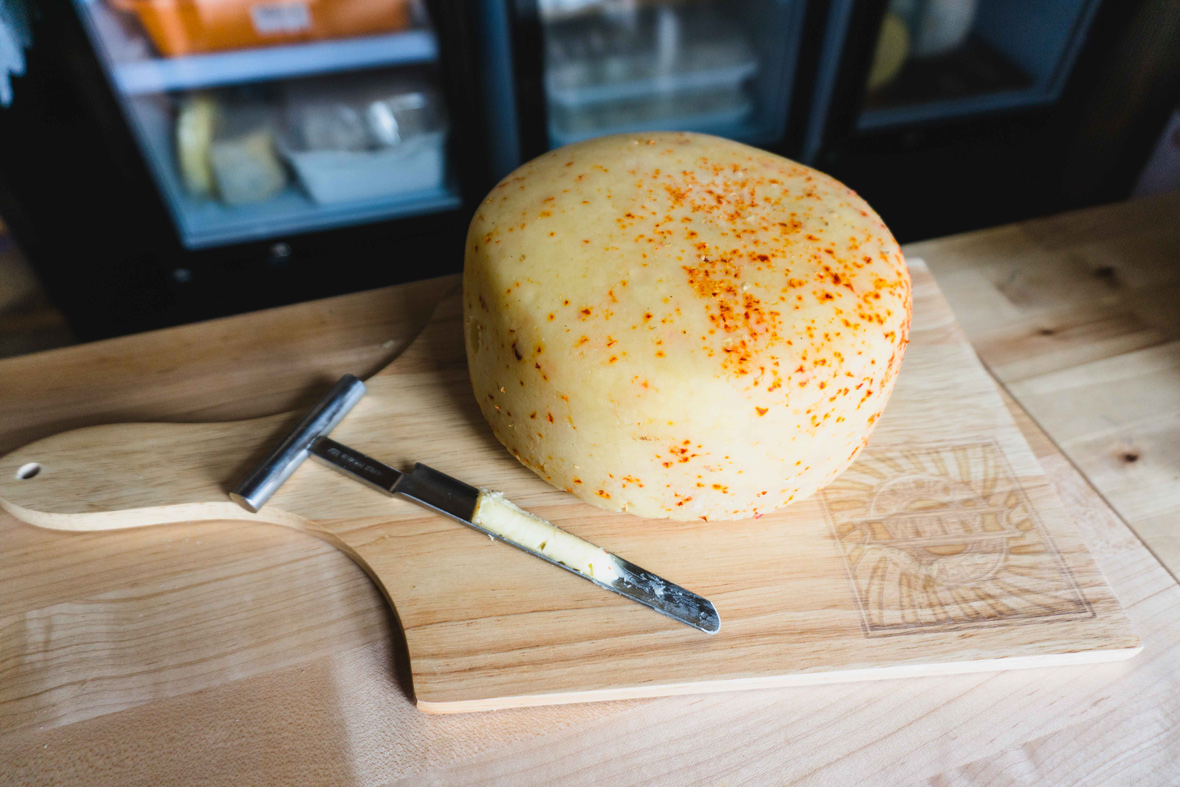
While she has always been a cheese eater. Annisa’s true cheesemaking obsession came after her honeymoon in Italy, where she had Mozzarella di Bufala for the very first time. To Annisa, those gooey, pillowy mozzarella balls she had in Rome were the epitome of love at first bite. Understandably then, when she returned home, the lackluster faux-mozzarella balls sold at her local supermarkets were never quite able to satisfy her in the same way. Frustrated by this, Annisa resorted to making her very own mozzarella.
虽说 Annisa 一直是个“奶酪食客”,但她真正成为并爱上“奶酪制作者”的身份,却是她到意大利度蜜月之后。在罗马,她第一次尝到水牛马苏里拉奶酪(Mozzarella di Bufala),那些松软又粘糊糊的马苏里拉奶酪球,让她“一口定情”。而度完蜜月回国后,Annisa 再也不能满足于超市里那些暗淡无光的仿奶酪球了。于是,Annisa 决定自己亲手来制作马苏里拉奶酪。
Little did she know at the time, she’s picked one of the most temperamental cheeses in the world to make. Heat it too much during the curd formation process and you’ll get empty, watery mozzarella shells; stretch it too much at too low a temperature and the cheese will resemble plastic-y squash balls. After many spectacular failures (which she often turned into halloumi or ricotta) and no end in sight, it was one of her French cheese mentors who pulled her out of this mozzarella spiral and got her working on other, simpler cheeses like the Welsh Caerphilly and Swiss Tomme. That was when her cheese-making prowess truly burgeoned. After mastering these simpler cheeses, Annisa quickly grew confident enough to try her hand at making longer-aging cheeses like Cheddar and Montasio. She then dabbled with making bloomy rind cheeses like Brie and Camembert, and finally came full circle back to mozzarella, which this time around, was a roaring success! And the rest, as they say, is history.
但是当时的她并不知道,她选了世界上最有“脾气”的奶酪来制作。在凝结过程中,马苏里拉奶酪如果加热过度,最后就会变成中空的、水汪汪的奶酪壳;如果温度太低,奶酪就会变得像坚韧的塑料球一样。所以一开始,她制作的马苏里拉奶酪总是不成功,口感较硬(比如像 Halloumi 或 Ricotta 那样的干酪)。惨遭多次失败,在她几乎快要绝望时,她的法国奶酪导师把她从这个“马苏里拉奶酪”的黑洞里救了出来。导师让她先去制作相对简单的硬质奶酪,譬如威尔士卡尔菲利干酪(Welsh Caerphilly)和瑞士的多姆奶酪。在这之后,她的奶酪制作技术才有了长足的进步。而在熟练掌握这些简单奶酪的制作方法之后,Annisa 开始有足够的信心去尝试制作半硬质奶酪,如切达奶酪和蒙塔西奥(Montasio)奶酪。接着,她开始制作布里奶酪和卡门贝尔奶酪这类白霉奶酪;最后,她才再开始制作马苏里拉这种新鲜奶酪,而这一次她终于获得了成功!之后的事情,大家都知道了。
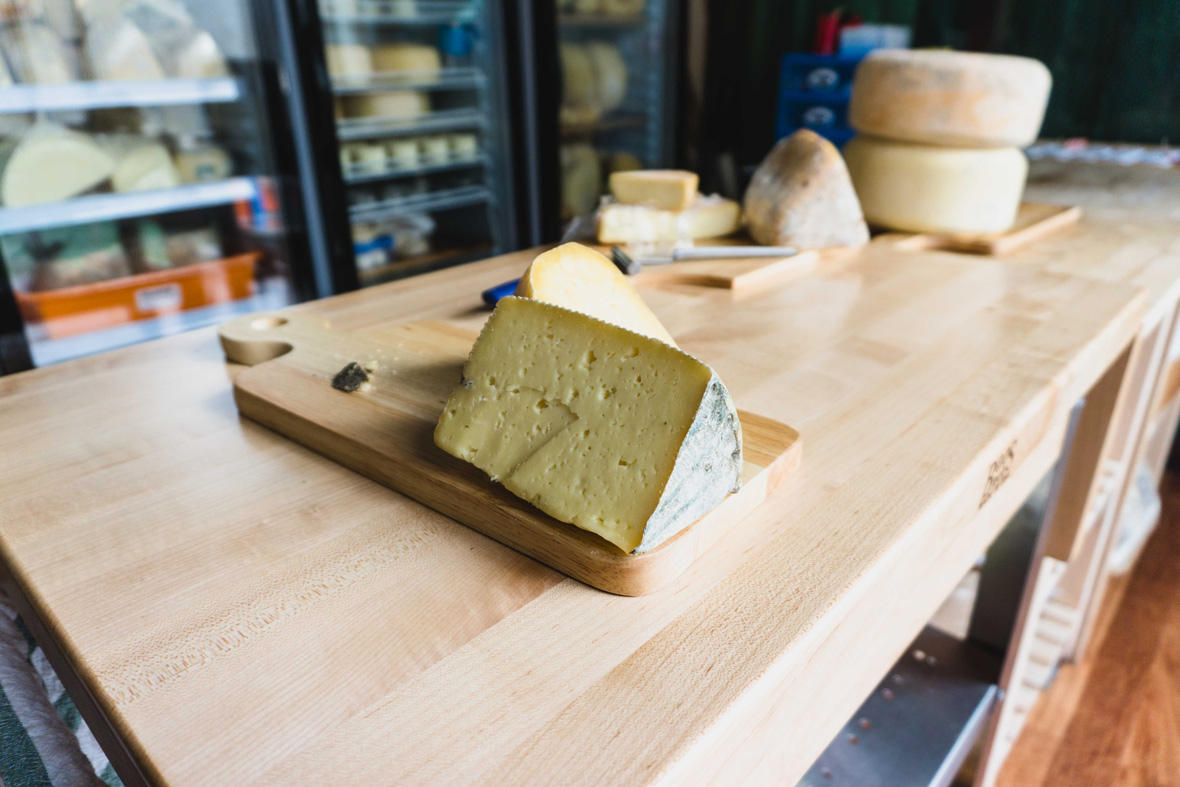
Since the beginning, Annisa’s business has only gone from strength to strength. In 2012, she started by selling her cheeses at festivals and bazaars around Kuala Lumpur and offered cheese-tasting session out of her small home in Mont Kiara. But with a great boom in business over the past two years, she now supplies her cheeses to many top restaurants in the city. Through it all, however, her focus has always been on keeping it personal and artisanal, satisfying all who steps into her home with her warm hospitality and infectious love for the cheesemaking craft. She especially loves introducing her cheeses to (read: blowing the minds of) local Malaysians who’ve never had a whiff of cheese in their lives, and on the other end of the spectrum, European expats craving for a genuine taste of their home country. And as far as I know, she’s never failed to impress.
Well, it’s only a matter of time before all of Kuala Lumpur, if not Malaysia, gets caught up in the heady, funky, but oh-so-addictive world of Annisa’s cheese. So here’s to a cheese-filled, funked-up future for Malaysia! All the Brie-est, Annisa!
2012年以来,Annisa 的奶酪公司越做越大。最开始,她只是在吉隆坡附近的集市上卖奶酪,或是在 Mont Kiara(马来西亚吉隆坡市中心西北部的一个乡镇) 的家中举办奶酪试吃活动,直到去年,她的奶酪生意越来越成功,她现在已经是吉隆坡许多顶级餐厅的奶酪供应商。但制作奶酪这件事,对她来说,自始至终都出于个人对奶酪的热爱,和对手工制作工艺的热忱,她喜欢用自己制作的奶酪来招待家中的客人,希望让他们也爱上这门工艺。她特别喜欢把奶酪介绍给从来没吃过奶酪的马来西亚人,还有那些怀念家乡美食的欧洲人。而据我所知,还从来没有人对她的奶酪失望过。
用不了多久,Annisa 打造的那些风味“浓郁”、创新独特的奶酪必定会让所有吉隆坡人(甚至是整个马来西亚)都为之上瘾。让我们拭目以待奶酪在马来西亚发扬光大的一天吧!Annisa,请接受我最真“芝”的祝福!
